The perfect 5-day Switzerland itinerary
Some links in this post are affiliate links, which means I earn a small commission if you book through them, at no extra cost to you. This support helps keep this site running, the suitcase wheels spinning, and lets me keep writing ultra-detailed travel guides that are free for you to use to plan your next adventure.
Planning on spending five days in Switzerland on an upcoming Europe trip? This 5-day Switzerland itinerary will show you where to go, how to get around, where to stay, what to do and even how much you should budget for your Switzerland adventure.
I often get asked what my all-time favourite country is, and while I can never give a definitive answer (it totally depends on my mood!), Switzerland is always in the top five. Along with Vietnam, Italy, Türkiye and New Zealand, if you were wondering.
This captivating country ranks highly on my list for a number of reasons. Low crime rates make it one of the best European destinations for solo female travellers, the scenery is divine and diverse, it’s logistically easy to get around thanks to a fantastic rail network, and there is so much to see, do and eat, no matter your travel preferences. Also, fondue. Need I say more?
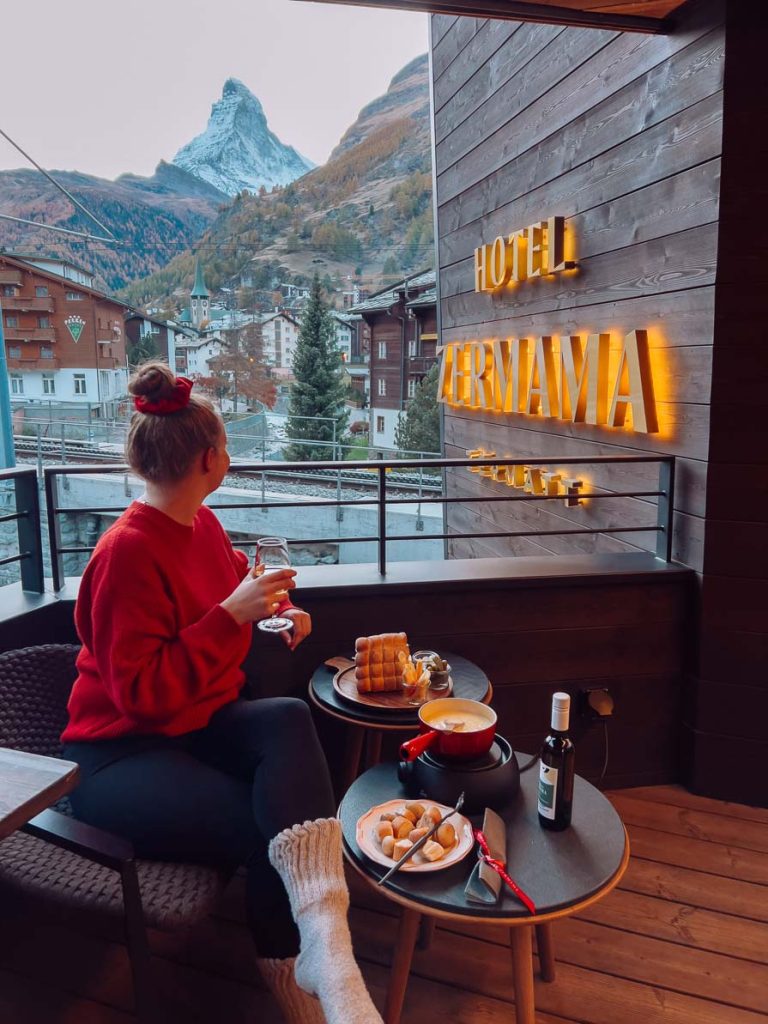
It’s no secret that Switzerland can be pricey, but luckily the compact country is easy to explore even on a short trip. This 5 day Switzerland itinerary takes you around a bunch of the highlights, from historic old towns to charming mountain villages to the luxury resort towns. You’ll tick off adventures in Interlaken, charming Lauterbrunnen, a bunch of epic mountain viewpoints and get a taste of alpine luxury to finish up.
I’ve also shared some tips and tricks to help you prepare for your five days in Switzerland, including info on the weather, when to visit Switzerland, what languages people speak, how to get around, and how much to budget for this Switzerland itinerary.
So put on your travel planning hat and let’s dive into the ultimate Switzerland 5 day itinerary.
P.S. Right now I have a 10% off promocode for all Switzerland tours and attractions on Klook, including the Swiss Travel Pass and the Half Fare Card! It can only be used on your first booking though so make sure to put all your activities in your cart and book them at once, the promocode is FINDINGALEXXKLOOK
5-day Switzerland itinerary summary
Day 1: Zurich to Interlaken, explore Interlaken
Day 2: Lauterbrunnen day trip from Interlaken
Day 3: Jungfrau day trip from Interlaken
Day 4: Interlaken to Zermatt, explore Zermatt
Day 5: Zermatt to St Moritz on the Glacier Express
🚞 Staying in Switzerland for longer? Check out my 10 day Switzerland itinerary or my 3 week Northern Italy & Switzerland itinerary
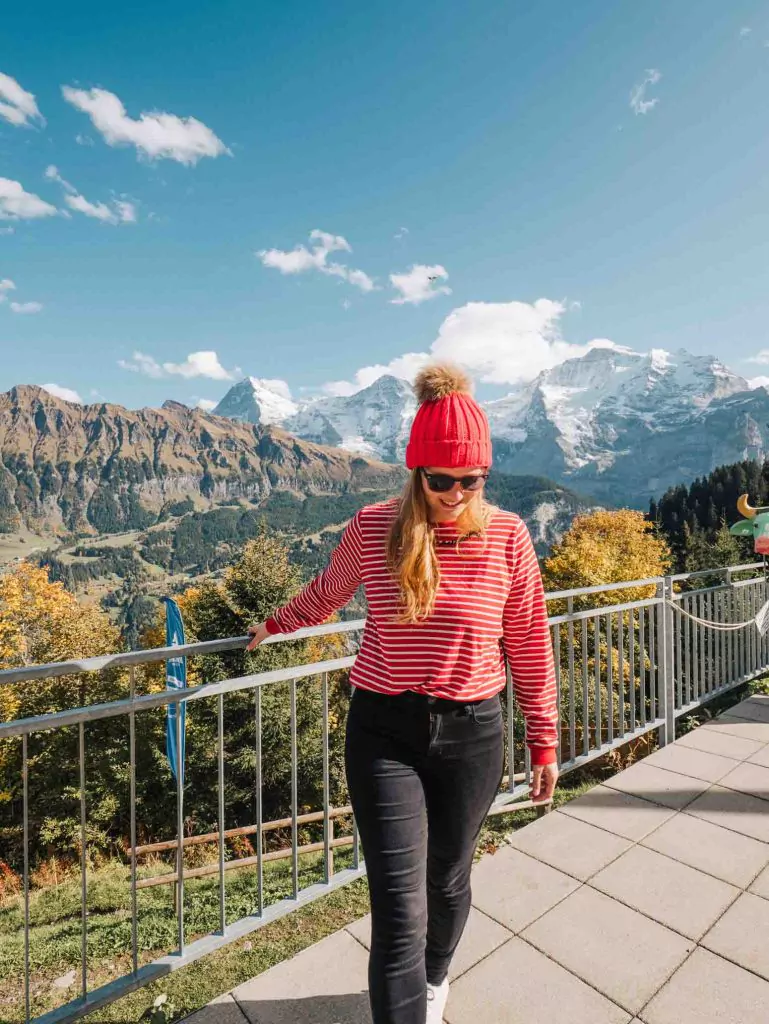
What to know before your 5 days in Switzerland
Weather in Switzerland
Switzerland is totally dependent on the season, and can be quite changeable thanks to its alpine landscapes. Overall the country’s climate is moderate, usually not too hot or extremely cold.
🌞 In the summer months (June-August) it’s typically warm and sunny, though short, sharp thunderstorms can hit without much warning. Always be prepared with a warm jumper and raincoat, especially if you’re heading into the mountains.
🍂 In autumn (September-November) the weather is unpredictable, sometimes mild and pleasant, sometimes super chilly and dreary, but the changing colours of the leaves make any autumn trip worth it.
☃️ Winter (December-February) brings snow and tourism to the country’s many ski resorts, which tend to stay open until March, April or early May depending on the altitude. Winter days are short in Switzerland, with the sun rising after 8am and setting before 5pm in some places, so keep this in mind when planning out your day’s adventures.
💐 If you’re visiting in spring (March to May) then you can enjoy the days getting longer, the sun melting the snow at lower altitudes, and processions of cows heading back to their mountain pastures.
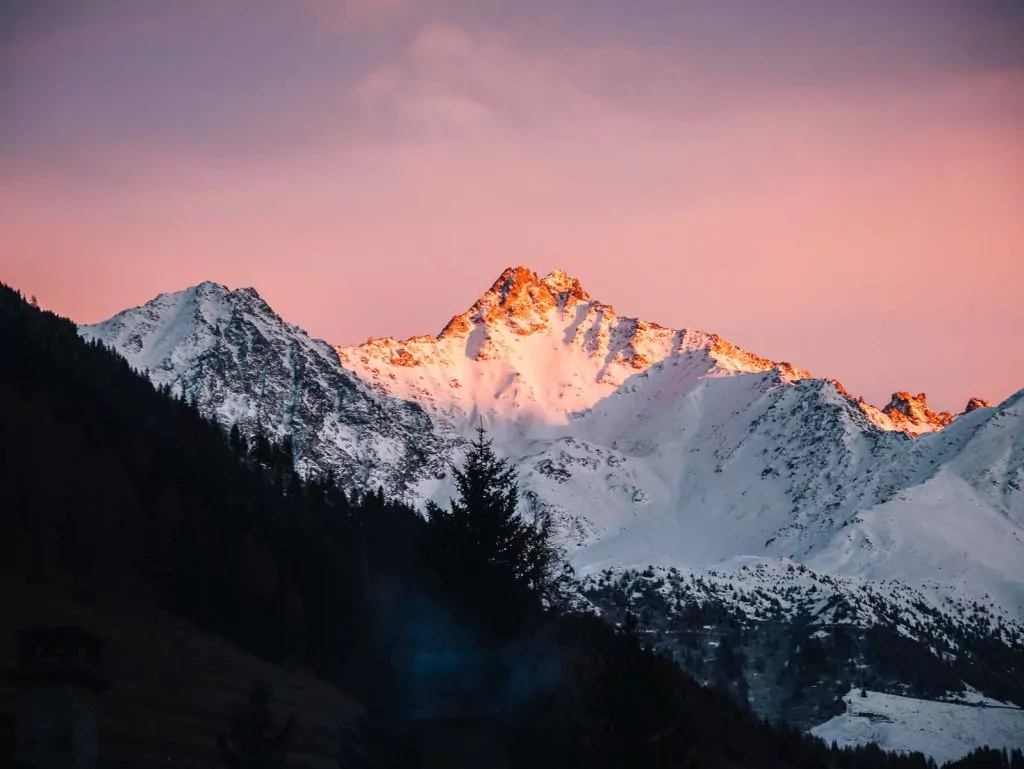
Busy seasons in Swizterland
The busiest months in Switzerland in terms of summer tourism are July and August, when neighbouring countries are enjoying summer holidays and want to escape their hot, humid cities for some time in the mountains. If you’re able to avoid these months then you’ll be able to take advantage of cheaper prices and less crowds, but if you don’t have that option, then ensure you book your accommodation early so you aren’t left with only crazy expensive options last minute.
The best time to visit Switzerland is in the shoulder seasons, from May to mid-June, September, and October. These months will bring mild temperatures, fantastic hiking conditions, cheaper accommodation and fewer people around.
For winter adventures, January to March would be best. Many ski resorts open in December however recent years have had a really delayed start to the ski season, and the snowfall sometimes isn’t great until mid-January.
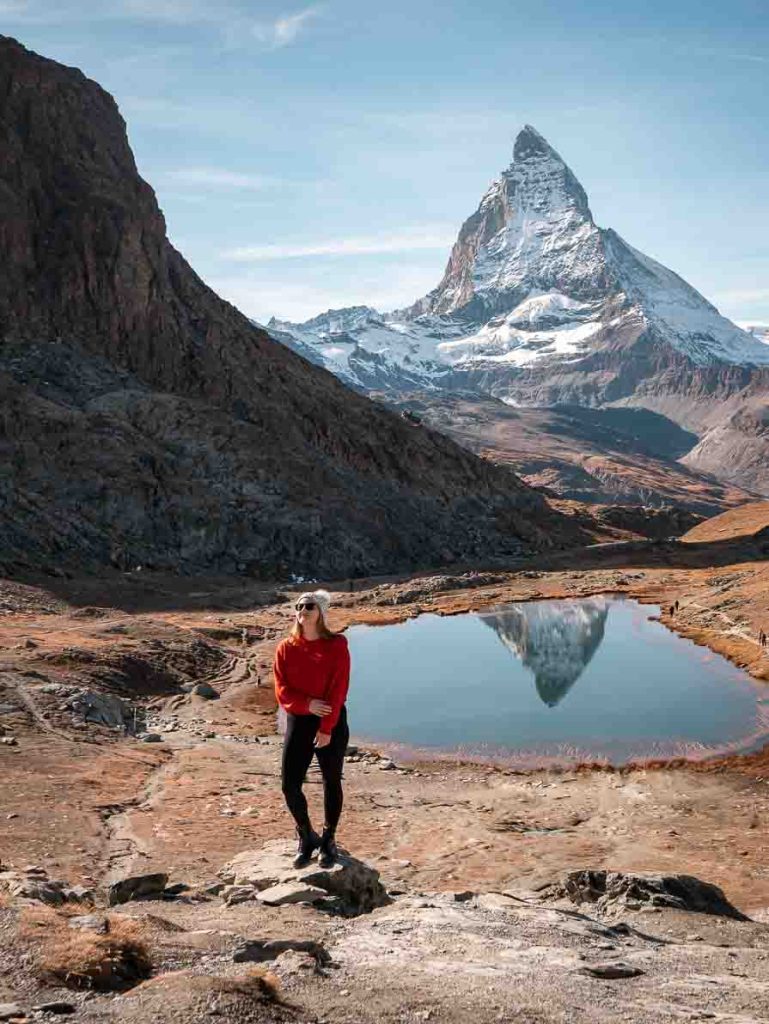
Languages in Switzerland
If you’re only monolingual (or as I like to call it, single-lingual, which is a much more fun word) like me, the Swiss are going to blow your mind. The country has four official languages: German, French, Italian and Romansch.
More than 60% of the population speak Swiss German, which is a term that refers to various regional dialects of the German language. The next most commonly spoken language is French with 23%, then Italian with 8%, and Romansch (a Romance language native to the canton of Graubünden) at less than 1%. More than two-thirds of Swiss adults use more than one language at least once a week.
English is regularly spoken by 45% of the population, especially in the tourist cities, so if you’re following this five day Switzerland itinerary, chances are you’ll be able to communicate in English.
But as always with visiting any country, it doesn’t hurt to learn some basics of the local language! When you check into your hotel in each place you should ask them how to say ‘hello’, ‘goodbye’, ‘please’ and ‘thank you’ at a minimum, this way you’ll be able to learn it in the local accent (Swiss German can be different to German-German) and gives you a chance to practice and have them correct you if necessary.
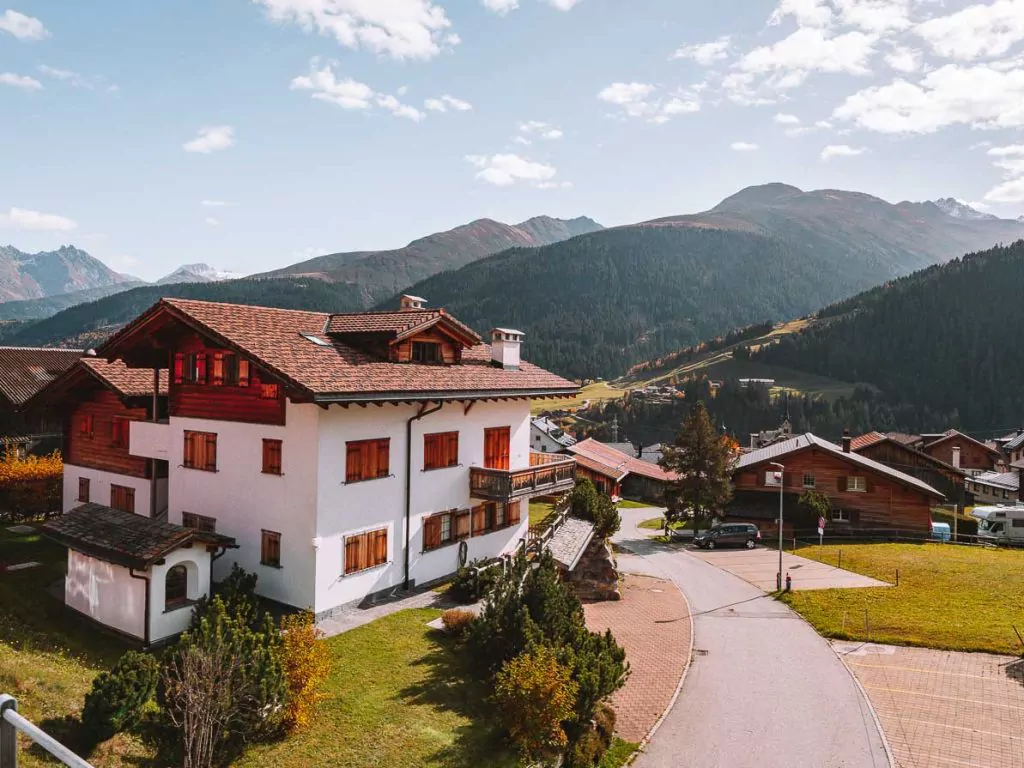
How to get to Switzerland
By plane
Switzerland is well-connected to European hubs and other continents by plane, Zurich’s the main airport but Geneva is another popular arrival airport.
SWISS (the national airline) often offers good value long-haul flights to Europe from places like the USA, Australia and New Zealand, sometimes using codeshare partners in the Star Alliance network.
Some low cost carriers also service Switzerland’s airports, like easyJet, Vueling, Eurowings and Pegasus.
✈️ Check out my top tips on finding cheap flights
By train
You can get direct trains to Switzerland from all over France, Germany, Italy and Austria, as well as Amsterdam, Budapest and Prague, to name a few. If you don’t mind changing trains once or twice you can reach Switzerland from basically anywhere else in Europe.
If you’re combining Switzerland with other countries, check out my Northern Italy & Switzerland itinerary as well as my 2 month Europe itinerary or very comprehensive 3 month Europe itinerary for some easy train trip suggestions.
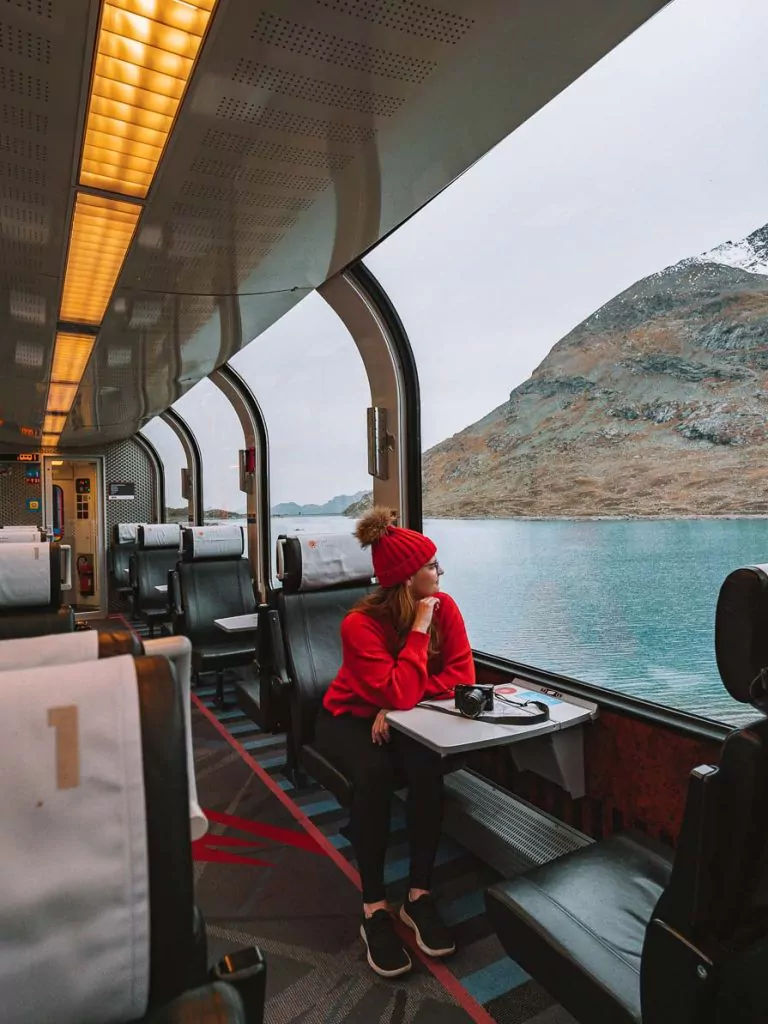
By car
If you’re road tripping around Europe (lucky you!) Switzerland is a simple next step after France, Germany, Austria or Italy.
Paris to Zurich is a 6h 30m drive, Munich to Zurich is 3h 25m, Innsbruck to St Moritz is 2h 45m and Milan to St Moritz is only 2h 25m.
You can drive in Switzerland on your normal driver’s license from home as long as the license is in English. If your license isn’t in English, you’ll need to get an International Driver’s Permit (IDP) before you arrive in Switzerland. If you plan on driving in Italy before or after your five days in Switzerland you’ll need an IDP anyway, as Italy doesn’t accept foreign licenses as valid permits on their roads.
Keep in mind that many mountain villages in Switzerland are car-free, including Zermatt on this itinerary, so if you’re travelling by car you’ll need to park it outside of the village and then catch the train or an electric cab to your accommodation.
How to get around Switzerland
The best way to get around Switzerland is without a doubt to use the brilliant rail network. Switzerland’s main cities and tourist locations are well connected by regional trains, panorama trains (fancy tourist trains) and mountain railways.
If you’re worried about the cost of trains adding up, don’t stress, because you can get a money-saving travel pass to help you get the best bang for your buck when planning how to get from A to B. The two main national travel passes are the Swiss Half Fare Card and the Swiss Travel Pass.
Swiss Half Fare Card
For this exact itinerary, the Swiss Half Fare Card ends up being the travel pass that offers the best value for money (potentially in conjunction with the Jungfrau Travel Pass but more on that one soon).
The Swiss Half Fare Card gives you half price across all trains, buses, boats and public transport, as well as most mountain excursions like the Eiger Express to Schiltorn and Jungfrau Railway in this itinerary.
P.S. I have a promocode for Klook which gives you 10% off your Swiss Half Fare Card or Swiss Travel Pass, making them even better value for money! Visit klook.com or download their app, find your chosen travel pass and activities, and use the promocode FINDINGALEXXKLOOK to snap up your discount.
Swiss Travel Pass
The Swiss Travel Pass (get 10% off with promocode FINDINGALEXXKLOOK) is a pass which gives you unlimited access on the Swiss Travel System network, including most trains, buses, boats and public transport between around cities/towns/villages, as well as discounted rates (usually 50% off) for mountain transport like cogwheel trains and cable cars, and free entry to more than 500 museums.
Most transport is totally free once you’ve got your pass, but the premium panorama trains (like the Glacier Express in this Switzerland itinerary and the Bernina Express from St Moritz into Italy) require a seat reservation on top of the pass.
You can choose the number of days you want on your Swiss Travel Pass and it can either be consecutive days (good for a fast-paced trip where you’ll be using inter-city trains most days) or a flex pass where you choose your travel days (better for longer trips where you’ll only be moving every 2/3/4 days).
Which is better: The Half Fare Card or Swiss Travel Pass?
I know this is an annoying answer but it really does depend on your exact itinerary.
If you’re combining city breaks, mountain excursions and one or two panoramic train trips then the Half Fare Card often ends up being the best deal, but if you’re doing more panoramic train trips, less mountain excursions or the epic Grand Train Tour then the Swiss Travel Pass can come out on top.
One thing is for sure though, either pass is almost guaranteed to save you money vs. paying to point-to-point tickets if you’re exploring Switzerland for more than three or four days.
I’ve got some super detailed travel pass guides to help you figure out which pass is best for your trip, these all include example itineraries with actual cost breakdowns:
Other travel passes
There are a few other travel passes available to help save $$$ on your transport costs, with some covering travel across loads of countries in Europe, or more specific regional passes that cover certain cantons or areas in Switzerland.
If your Switzerland trip is part of a bigger Europe rail adventure, a Eurail Pass or an Interrail Pass might be worth looking into. These will cover most inter-city trains (including the expensive panorama trains) but they don’t cover buses, boats or mountain railways, though they do sometimes give a 15-30% discount.
If you are mainly planning on doing long trips in Switzerland with one or two panoramic trains then a Eurail Pass might work out as a good deal, but it might be even better to just buy a shorter Eurail Pass (or use your travel days elsewhere) and get a Swiss Half Hare Card for your time in Switzerland instead, that way you’ll get mountain excursions for a cheaper price.
And in terms of the regional travel passes, there are passes like the Tell Pass in the Lake Lucerne region and the Jungfrau Travel Pass that have brilliant coverage right across the transportation network for those regions.
Again, the savings depend on your plans but as a rough guide:
✅ The Jungfrau Travel Pass is worth it if you want to go up Jungfraujoch as well as one or two other mountains
✅ The Tell Pass is worth it if you’re doing two or more mountain excursions
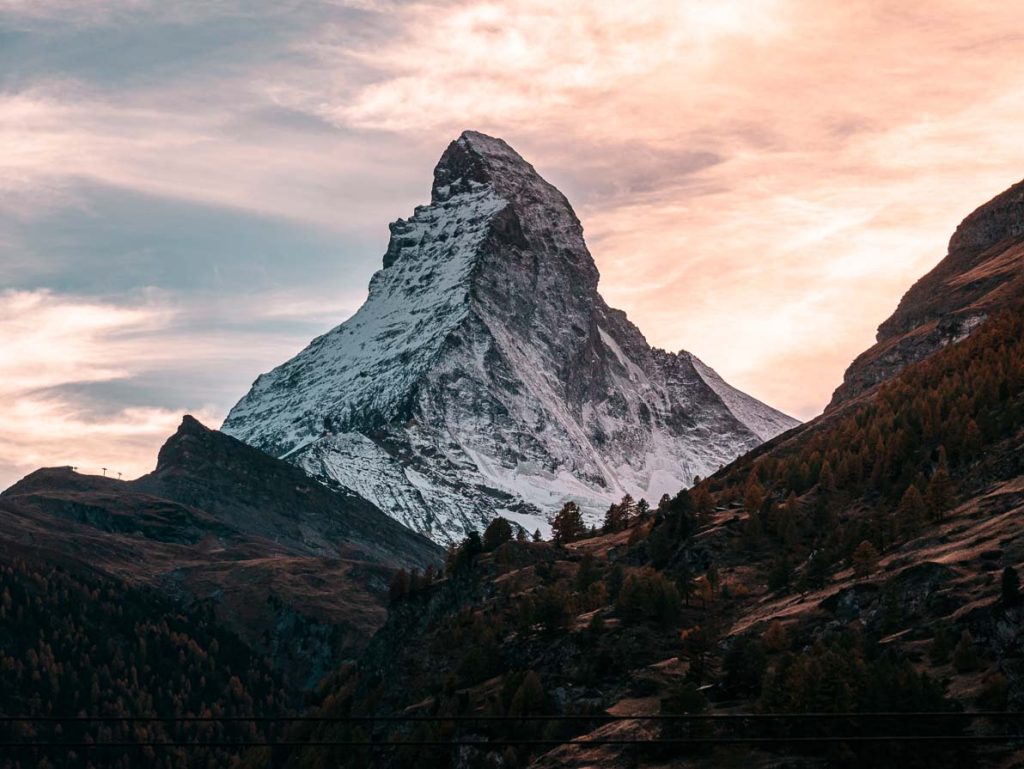
What to budget for five days in Switzerland
While visiting Switzerland certainly isn’t easy on the wallet, spending five days in Switzerland doesn’t have to totally break the bank.
If you’re expecting to live the high life, with beautiful hotel rooms, fancy dinners out and visiting every mountain viewpoint then sure, you’re going to spend a lottttt, but if you’re happy to stay in hostels or budget hotels, don’t mind self-catering a couple of meals a day and are keen to make the most of free hiking opportunities and the rail pass discounts, you might be surprised that you can keep it relatively affordable.
Please note: Pricing last updated in May 2025, based on shoulder season travel booked 3-4 months in advance. Prices are obviously subject to change and can vary hugely depending on the time of the year, how far in advance you book, and what city you’re in. The CHF has been hovering between 1EUR and 1.08EUR for the past few years, to give you context for the number below.
Accommodation
Expect to spend:
💰 45-65CHF for a bed in a shared dorm room at a hostel, maybe higher for touristy destinations and high season
💰 85-120CHF for a basic private room at a hostel, cheap hotel or guesthouse
💰 120-180CHF for a higher end single room at a nice hotel
💰 135-300CHF per night for a well-rated 3-4* hotel, add on 50-100CHF per night for access to a pool or hot tub
💰 400CHF+ for most boutique hotels or luxury resorts, right up to the four figures!
I always search for accommodation using Booking.com and cross-check with the direct website to see if booking direct is any cheaper (it’s usually not) or offers any extra benefits like free breakfast and late checkout.
Booking.com offers free cancellation on loads of their options though and I like to travel (or live) with minimal commitment so I book free cancellation and then can cancel if my plans change. Too easy!
🤑 Read my full guide for tips on finding affordable accommodation
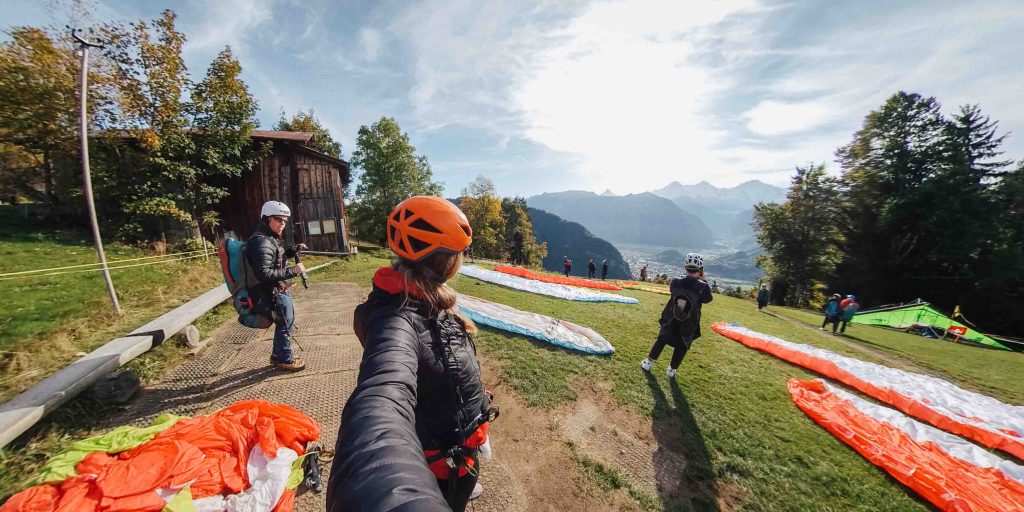
Transport
A quick note before these numbers scare you: This particular Switzerland itinerary includes a few expensive journeys, including visiting the Schilthorn summit, heading up to Jungfrau and taking the Glacier Express. If you’re visiting Switzerland on a budget you could absolutely do this itinerary for cheaper and spend your days enjoying free hiking trails rather than going up the mountains, and the Glacier Express route can be done on cheaper regional trains if you don’t mind switching trains, find out more in my Glacier Express guide.
Your transport costs will depend on your exact route, how far in advance you book your tickets, if you need flexible tickets or can commit to an exact time, and if you use a travel pass.
Let’s assume we’re sticking with this exact Switzerland 5 day itinerary, here are some calculations based on different situations (split into two tables to make it easier to understand).
We’ll look at:
- Booking full fare tickets at the last minute (if you book 2-3 months in advance you can save 30-50% sometimes but it really depends on demand!)
- Using a Half Fare Card
- Using a Jungfrau Trave Pass
- Using a Swiss Travel Pass
- Combining the Jungfrau Travel Pass for the good mountain inclusions and the Half Fare Card for the longer trips outside of Jungfrau
| Full fare | Half Fare Card | Jungfrau Travel Pass | Swiss Travel Pass | JTP + HFC combo | |
| Zurich to Interlaken | 73 | 36.50 | 73 | 0 | 36.50 |
| Grindelwald day trip | 95.60 | 47.80 | 0 | 36 | 0 |
| Jungfraujoch day trip | 223.80 | 111.90 | 63 | 147.80 | 63 |
| Interlaken to Zermatt | 86 | 43 | 86 | 0 | 43 |
| Glacier Express | 208 | 128.50 | 208 | 49 | 128.50 |
| Pass cost | 120 | 210 | 379 | 165 + 120 | |
| TOTAL | 686.40 | 487.70 | 640 | 609.80 | 556 |
And a quick summary for those of you who aren’t spreadsheet people:
- The Half Fare Card comes out on top, saving 28.95% vs. full fare tickets, 23.8% vs. the Jungfrau Travel Pass, 20% vs. the Swiss Travel Pass and 12.3% vs. the Jungfrau Travel Pass and Swiss Half Fare combo
- If you want to do more excursions in the Interlaken area, like lake cruises, Harder Kulm funicular or heading up to Murren, the Jungfrau Travel Pass + Half Fare Card combo might end up working out best
- If you were staying in Switzerland for more than five days but still had three or more days in Jungfrau, the JTP + HFC combo would also probably end up working out better as your Half Fare Card will cover you for discounts right across the country
- The Swiss Travel Pass does provide much more flexibility though, so if you prefer to go with the flow and not have to book any tickets for trains (apart from the Glacier Express which has mandatory seat reservations), this one might be your best options
🧮 Read more: Is a Eurail Pass worth it?
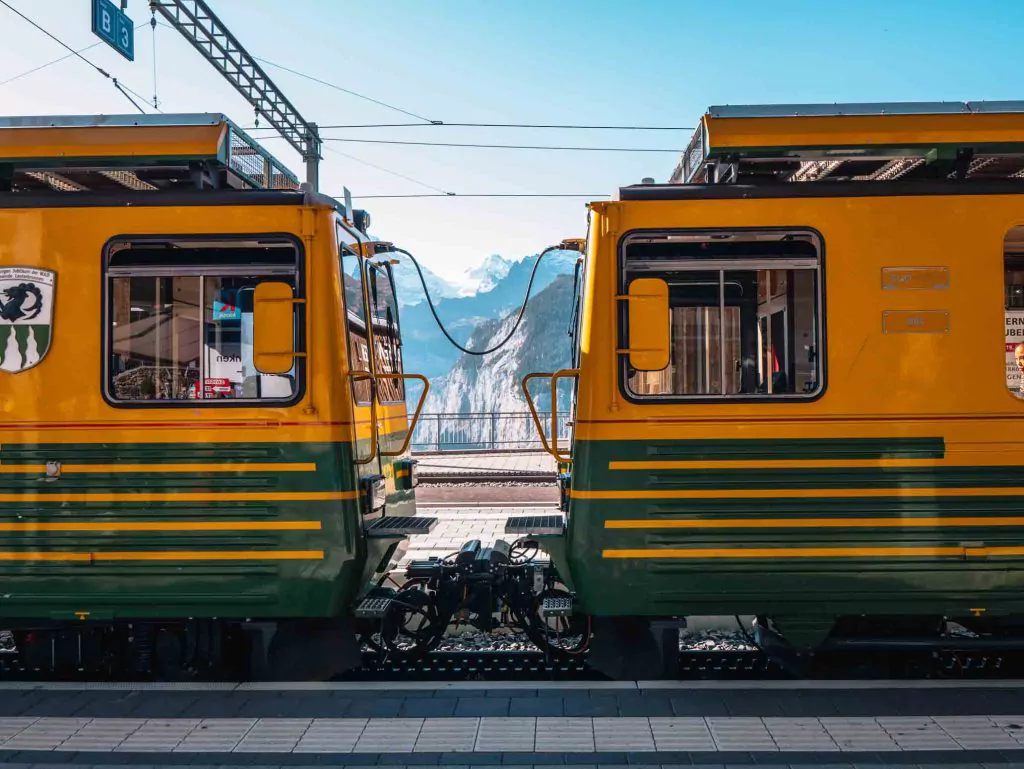
Food
If you’re on a really tight budget and you have a kitchen at your accommodation to cook things like pasta, rice or noodles, or you’re happy to live off supermarket foods like fruit, crackers, bread rolls, pastries and juice, you could keep your food costs to less than 100-120CHF for five days if you shopped at big supermarkets. This budget wouldn’t include more expensive snacks like muesli bars, ready-made sandwiches or salads, any alcohol, or any meals out.
A meal out at a decent but not fancy restaurant will set you back about 25-35CHF for a main, for somewhere more upmarket you might spend 50CHF or more on a main.
A local beer or wine typically starts from 6/7CHF, more expensive in fancy bars and restaurants.
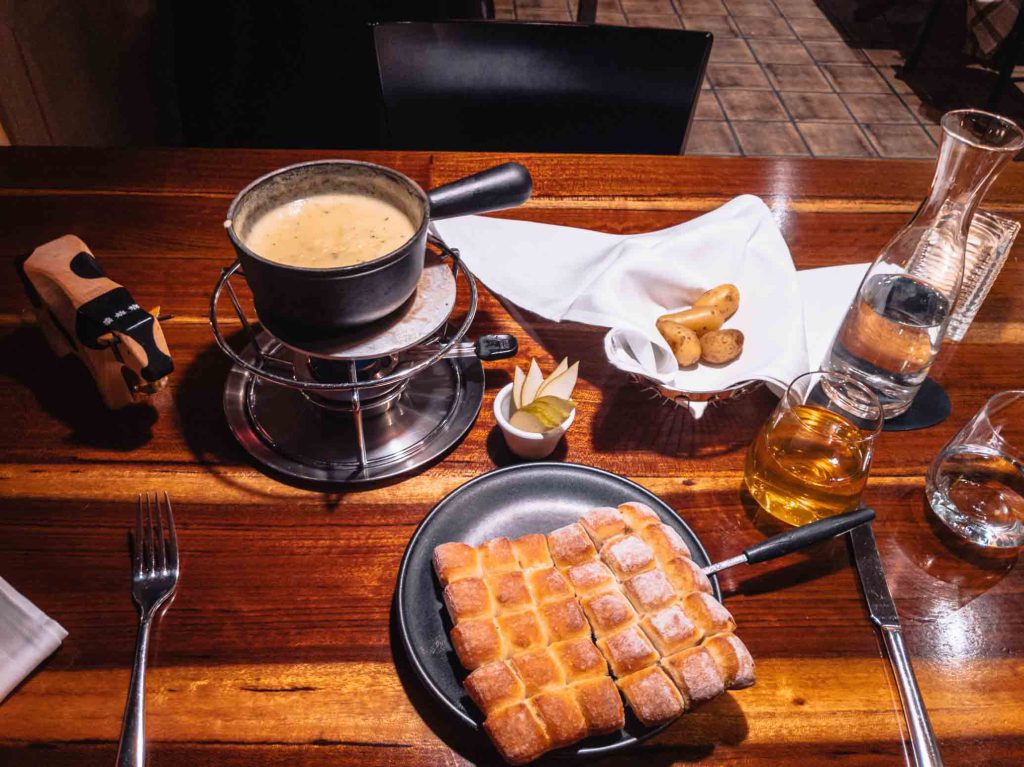
The ultimate 5-day Switzerland itinerary
Who is this Switzerland 5 day itinerary for?
This Switzerland itinerary is best suited to fast-paced travellers who want to make the most of each day, don’t mind moving around a bit, and who are more interested in the landscapes and nature than city breaks and museums.
Day one: Zurich to Interlaken
At the risk of sounding harsh, if you only have five days in Switzerland, I don’t think Zurich should be a priority. It’s a beautiful city with some cute, colourful buildings in the Old Town and there’s an impressive selection of museums, but it’s pretty expensive, very commercialised and certainly isn’t as stunning as other parts of the country.
I’d recommend arriving into Zurich and heading straight to Interlaken to begin your Switzerland adventure.
If you do have time to stay in Zurich, here’s a quick rundown of what to do and where to stay.
- Wander around the Aldstadt (Old Town)
- Head up to Lindenhof Square for an incredible view over the river
- Taste test Swiss chocolate at the famous chocolatiers in the city
- Visit the Lindt Home of Chocolate (get 10% off with the promocode FINDINGALEXXKLOOK)
- See the incredible stained glass windows of Grossmünster
- Visit a museum, there are lots!
- Stay at the B2 Hotel and experience their magnificent library, a bucket list place for book lovers
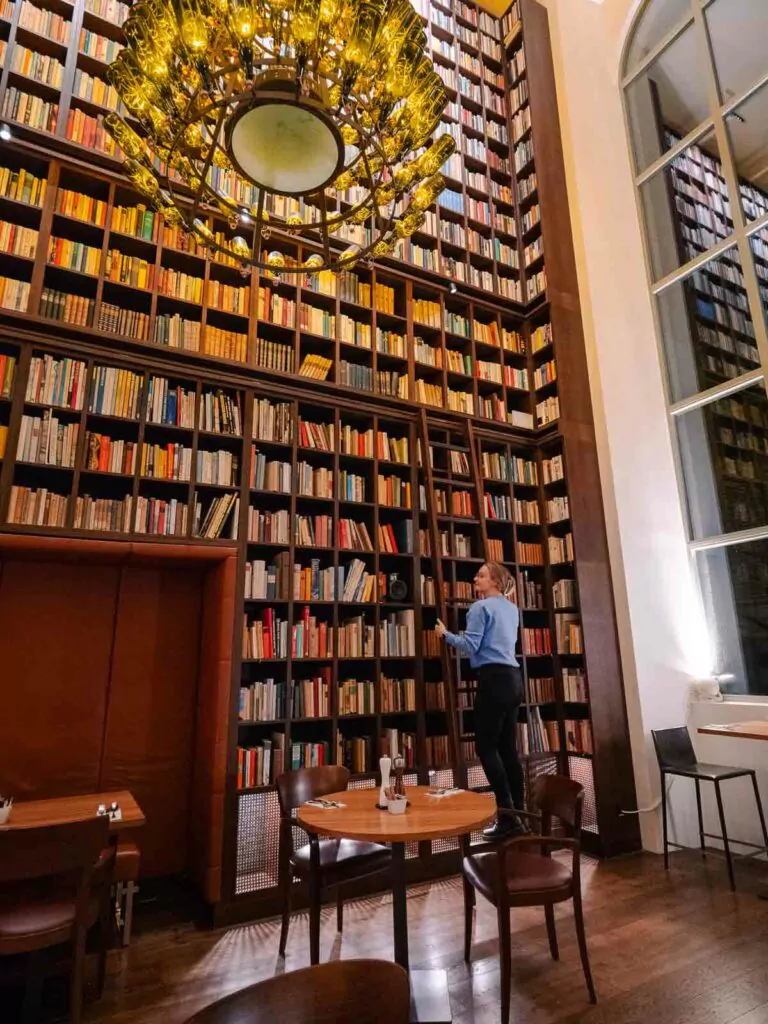
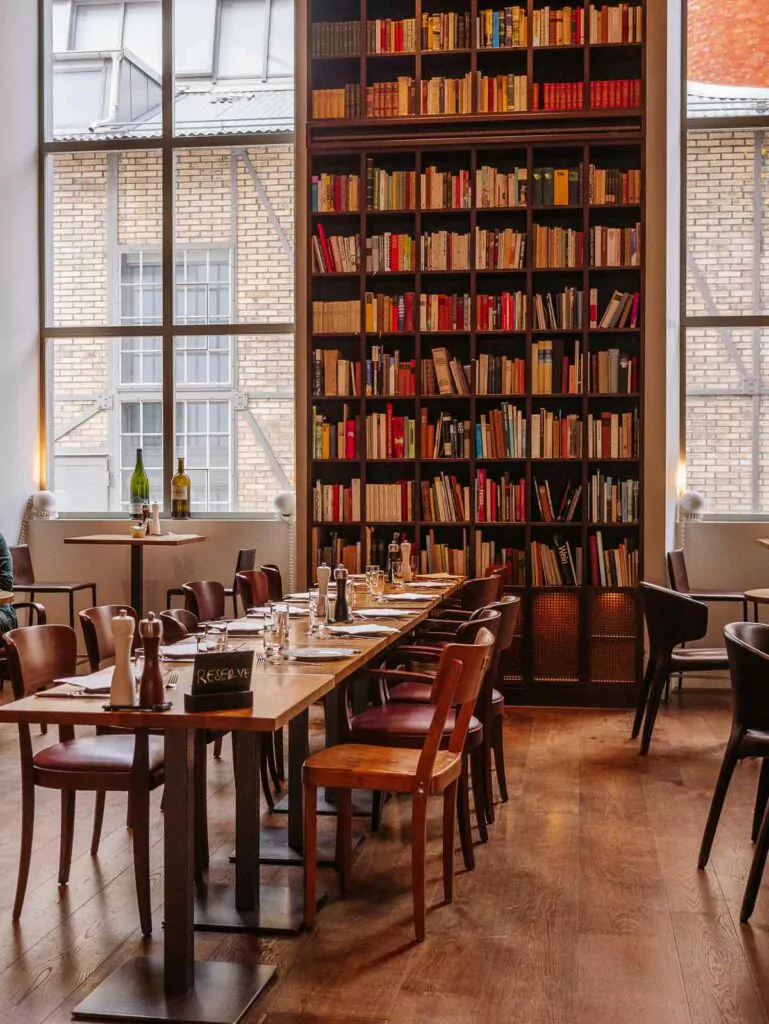
How to get from Zurich to Interlaken
Direct trains run every two hours, or trains with one train change in Bern run more often, both trains take just less than two hours.
How to get from Geneva to Interlaken
If you’re arriving into Geneva instead, you can make a two-train journey from Geneva to Interlaken with a short stop in Bern, it’ll take between 2h 45m and three hours.
About Interlaken
Interlaken is commonly referred to as the Adventure Capital of Europe, and I think the vibe is super similar to Queenstown in New Zealand!
There are lakes to kayak, walking trails to hike, slopes to paraglide off and peaks to summit. Anyone who enjoys outdoor adventures while travelling is going to absolutely love it here, but even if you prefer to sightsee rather than get too sweaty, it’s equally as impressive from a bus, a boat or an easy-to-reach viewpoint.
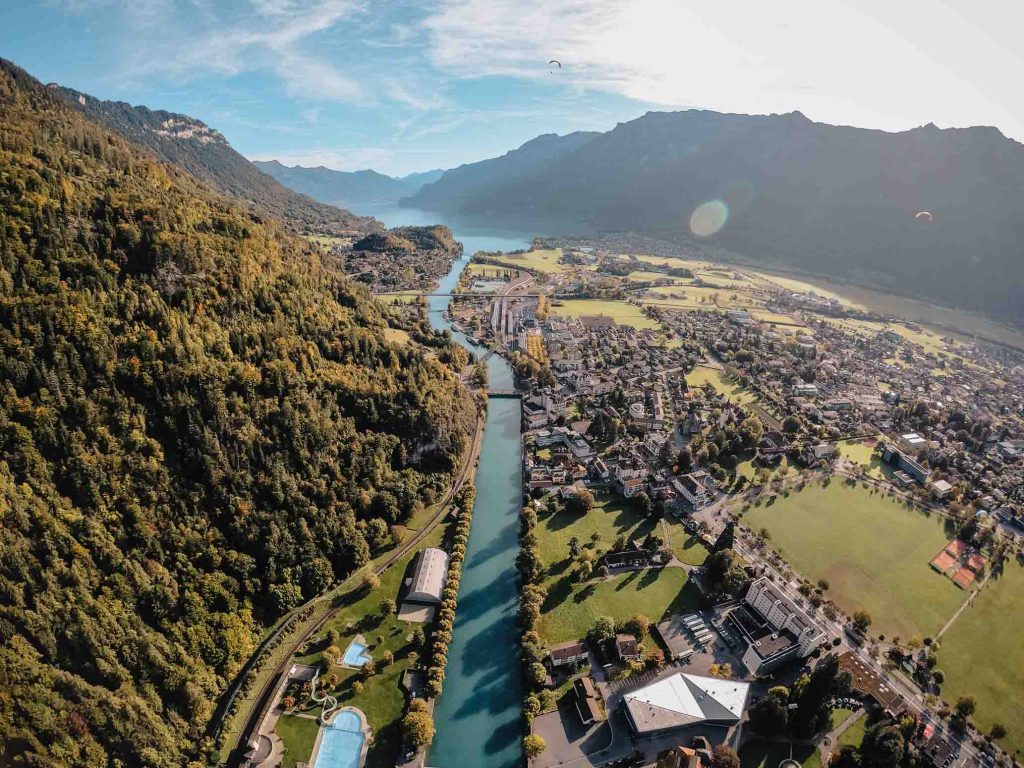
Things to do in Interlaken
- My absolute top recommendation for Interlaken is to go paragliding (I did this one, save 10% with promocode FINDINGALEXXKLOOK), one of the most breathtaking places in the world to see from the sky. And if you’re terrified by the idea of falling, let me reassure you as someone with the same fear that paragliding feels very secure, you’ve got a proper seat to sit in rather than feeling like you’re completely dangling with a chute attached to your back. Immediately after landing I wanted to book another one, and I’ve since paraglided two more times in New Zealand!
- Catch the funicular up to the Harder Kulm viewpoint at 1322m above sea level, there’s a pointed viewing deck perched somewhat precariously over the steep slope of the mountain. Hold onto your sunglasses as you look down or you may never see them again, speaking from experience after witnessing someone lose their Raybans while leaning over the railing.
- Get an adrenaline rush with a bungee jump, a canyon swing or a skydive
- Experience Interlaken’s canyons and rivers with a jetboating tour, white water rafting trip or a canyoning adventure (save 10% off that one with promocode FINDINGALEXXKLOOK)
- Take a scenic boat cruise across Lake Thun or Lake Brienz
- Or get some exercise with a kayak tour on Lake Brienz
- See the thundering Giessbach Falls
- Explore the St Beatus cave system on the shores of Lake Thun
- Ski, snowboard, go sledding or snowshoeing in winter
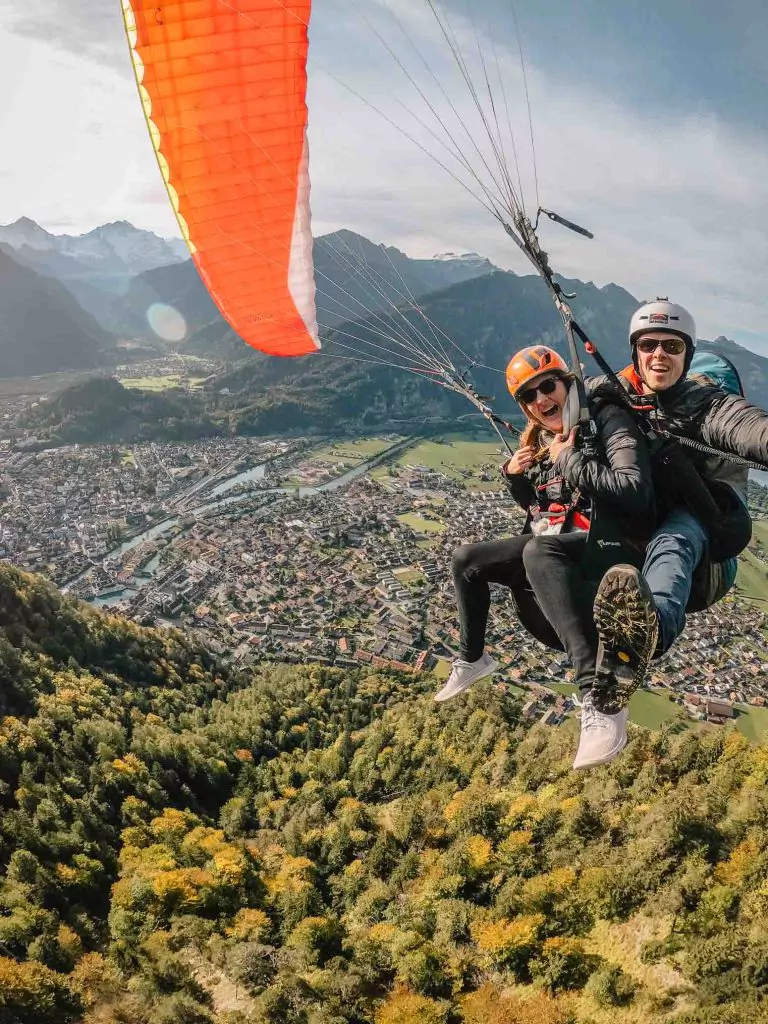
Bonus tip of what not to do in Interlaken: Lose your wallet! I lost my wallet during a day of hiking, and didn’t realise until I went to pay for my dinner (fondue, of course) and realised it wasn’t in my bag and I hadn’t seen it since 9am that morning. Yikes. I was able to pay with Apple Pay before my bank cancelled my card completely (which obviously cancelled my Apple Pay too) leaving me with literally no way of paying for anything as a solo traveller in one of the most expensive countries in the world. It was a weekend too so even the Western Union shops were closed. Cue a VERY stressful 12 hours with no sleep, many tears on the phone to the bank and to my parents, and a bit of a breakdown to the Balmers Hostel staff who gave me a hug and a free cider (legends). The next morning I got up early to retrace my steps, as I was walking past reception the staff let me know that a bus driver had found my wallet with my hostel key in it and had detoured her bus that morning to drop it off! Switzerland is THE BEST! I bought some chocolate for the driver and asked the bus station staff to give it to her when she finished her work day so I hope she got it.
Lesson to learn from this: DO NOT PUT ALL YOUR MONEY IN ONE PLACE for the love of all travel gods, this is an absolute rookie mistake and I’m embarrassed that I did something so silly. Always have a back up card and some easy-to-exchange cash like Euros, Pounds or USD in a safe place like a zipped pocket of your suitcase. These days I also travel with AirTags in my bags, including one in my wallet, which would have saved a lot of stress as it would have alerted me that I’d left it behind as soon as I got off the bus.
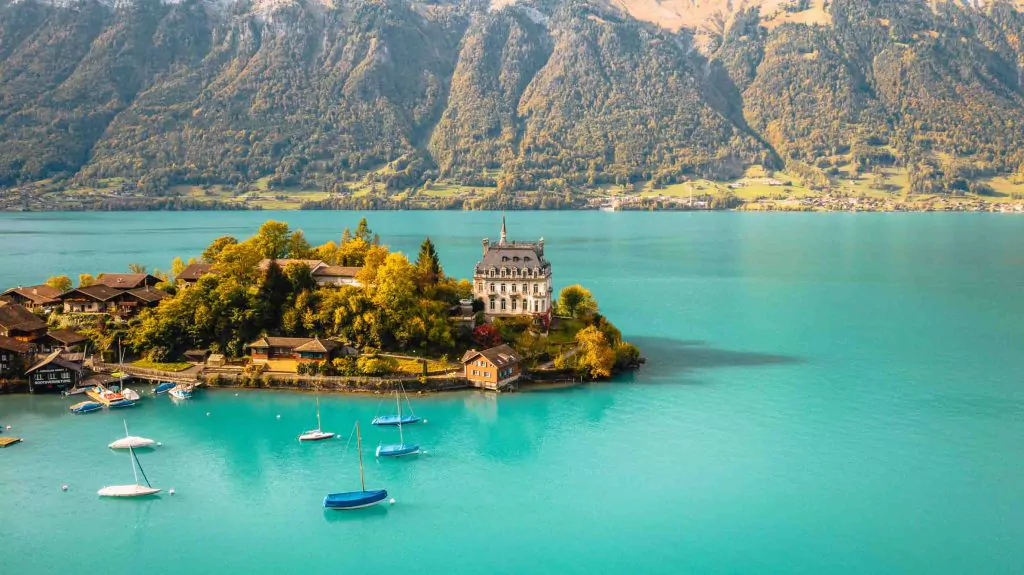
Where to stay in Interlaken
Budget | Backpackers Villa Sonnenhof is perfect for budget travellers in Interlaken, ideally located right near the main park with simple but comfy dorms and private rooms, a huge guest kitchen, hang out areas and a dedicated co-working space. This is where I’ve stayed recently and I’d go back for sure! If Backpackers Villa isn’t available then some other top-rated budget options are Interlaken Youth Hostel and Adventure Hostel.
Mid-range | For something comfortable but not too pricey you could consider Hotel Bernerhof, the Hey Hotel, Boutique Hotel Bellevue or Hotel Interlaken
Luxury | The best-rated five star hotel is Victoria Jungfrau Grand Hotel & Spa, or for a luxurious apartment stay there’s the Swiss Hotel Apartments

Day two: Lauterbrunnen day trip
Day two of this five day Switzerland itinerary takes you to Lauterbrunnen, a picture-perfect village that looks like it’s straight off a postcard.
How to get from Interlaken to Lauterbrunnen
It’s only a short 20 minute train from Interlaken Ost station to Lauterbrunnen.
About Lauterbrunnen
As far as photogenic destinations go, I can guarantee that the valley village of Lauterbrunnen is one of most picturesque places you’ll ever see.
Quaint alpine chalets are tucked into the hilly terrain, a sky-high waterfall tumbles over the jagged cliffs behind the town (and 71 other waterfalls can be seen flowing into the valley too), and the height of the mountains means you’ll get dramatic lighting conditions around two hours after sunrise and before sunset.
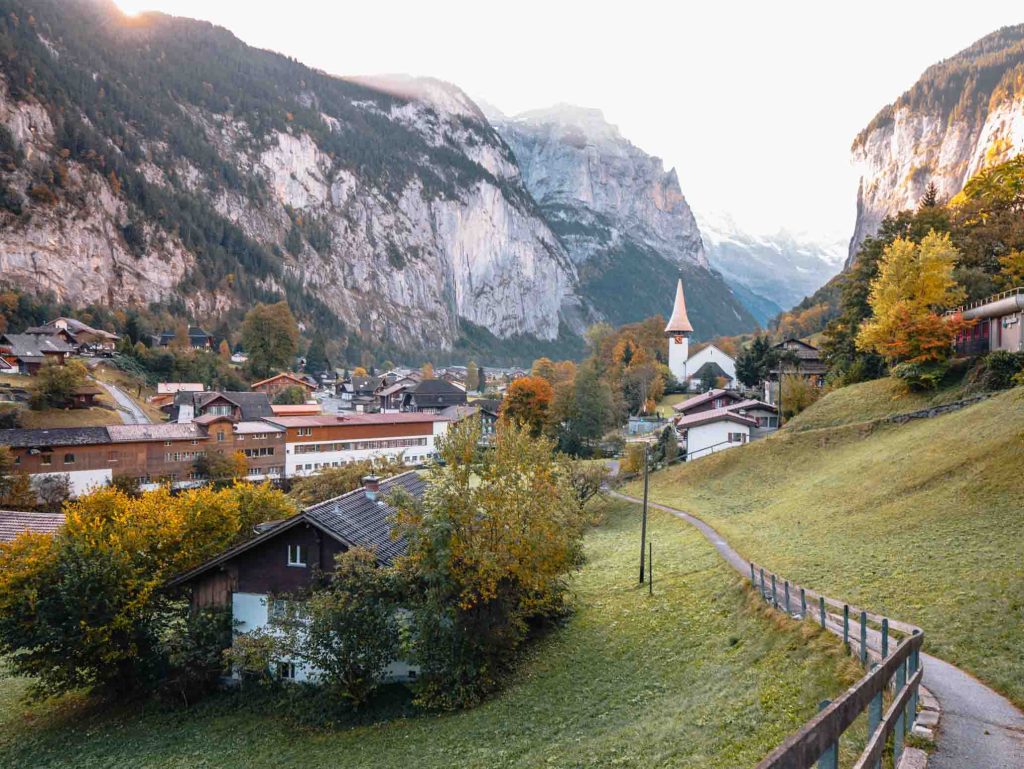
Things to do in and around Lauterbrunnen
- Take a relaxing walk around town and enjoy the superb scenery
- See the iconic Staubbach Falls, just a short 1km walk from town
- Lauterbrunnen is known as the “Valley of 72 Waterfalls”, how many of those can you count?
- Spot Lauterbrunnen’s famous church
- Visit the incredible Trümmelbach Falls, Europe’s largest subterranean waterfalls
- Catch the cogwheel train up to Wengen (only 15 minutes) for incredible views over Lauterbrunnen, it’s a good spot to grab some lunch
- Take a 4 minute cable car to Grütschalp and then a 14 minute train to Mürren, another charming mountain village
- Visit a famous James Bond filming location, the Piz Gloria from the 1969 “On Her Majesty’s Secret Service” film, which sits atop the Schilthorn alpine peak. At 2970m above sea level it offers expansive, panoramic views over more than 200 mountain peaks, including Mönch, Eiger, and Jungfrau. You could grab a meal at the Piz Gloria rotating restaurant, watch some scenes from the movie in the Bond Cinema, or get your heart racing with a stop at the Birg Thrill Walk, a 200m cliffside walk with glass floors, wire tunnels and more. Book tickets in advance as they can sell out at busy times.
- Enjoy one of the many hikes on offer in the area if you have time, there are easy flat walks past the waterfalls, or you can hike to or from some of the mountain villages
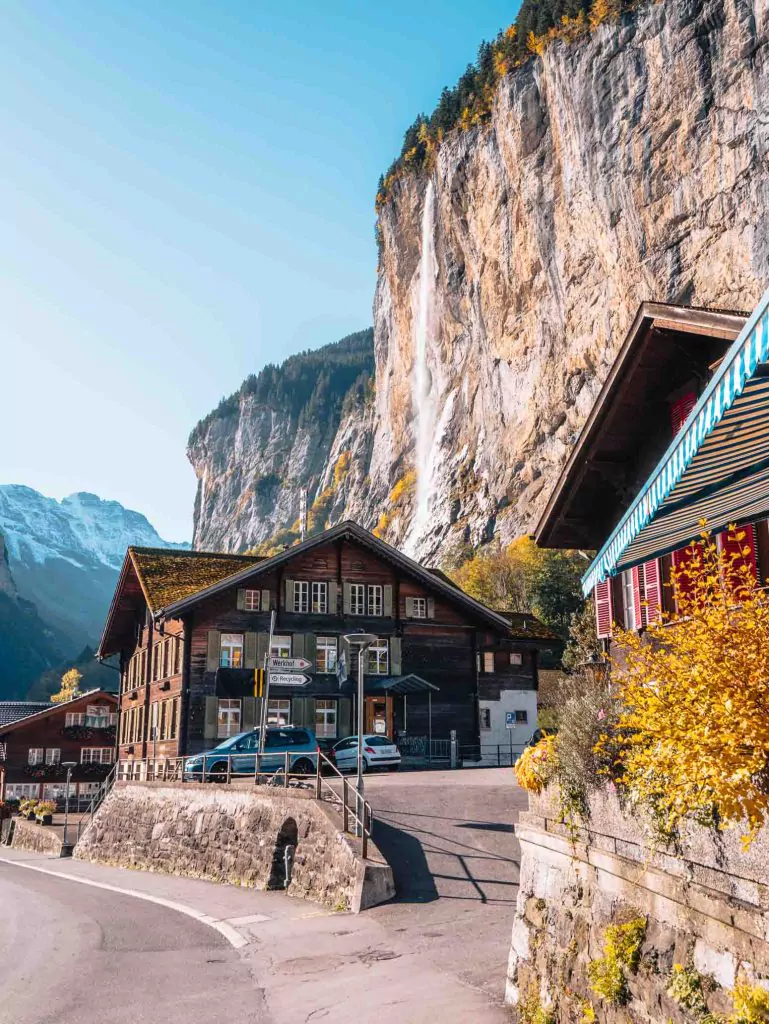
Should you stay in Lauterbrunnen?
There are some nice places to stay in Lauterbrunnen (as well as in Mürren, Grindelwald or Wengen nearby), so you could either choose to move your luggage here for two nights (day two and day three), or just stay in Interlaken for the first three nights and use that as a base for day trips if you’d prefer to sleep in one place for longer.
If you do choose to stay in or near Lauterbrunnen, here are some top-rated options.
Budget | Valley Hostel, Alpine Base Hostel and Camping Jungfrau in Lauterbrunnen, or Mountain Hostel in Gimmelwald or Eiger Guesthouse in Mürren
Mid-range | Hotel Silberhorn, Hotel Staubbach, Hotel Oberland (all in Lauterbrunnen) and Berghaus Männlichen (Grindelwald) are all great value options for a mid-range budget
Luxury | Bergwelt Design Hotel (Grindelwald) is my absolute favourite luxury hotel in the area, with a wellness centre and stunning mountain views, otherwise Hotel Regina, Alpine Hotel Wengen and Beausite Park Hotel are all beautiful 4* options in Wengen
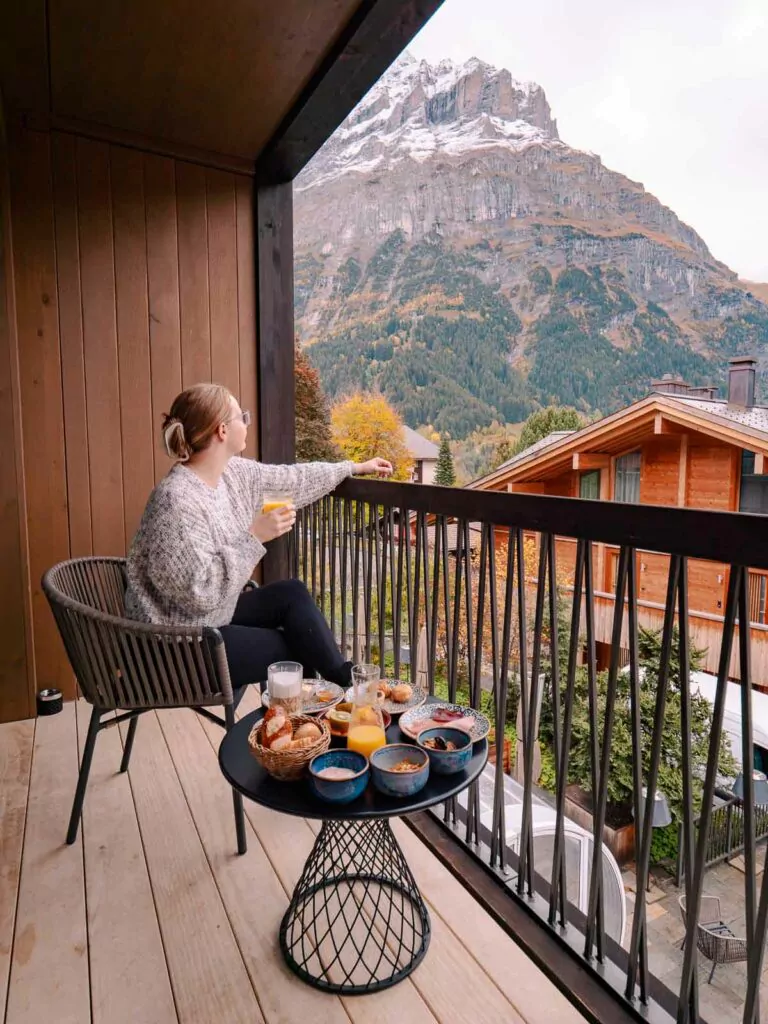
Day three: Jungfraujoch day trip
Day three of your five days in Switzerland gives you the chance to experience “the Top of Europe” on a day trip from Interlaken or from Lauterbrunnen.
About Jungfraujoch
One of the highest peaks in the Bernese Alps, Jungfrau towers above the valleys at more than 4100m tall. But despite this area being known as “the Top of Europe”, the mountain isn’t actually the tallest in Europe, in Switzerland, or even in the Bernese Alps!
PS: Mount Elbrus is the highest in Europe at 5642m, Monte Rosa is Switzerland’s highest at 4634m, and Finsteraarhorn is the tallest in the Bernese Alps at 4274m.
What the “Top of Europe” actually refers to is that the Jungfraujoch train station is the highest railway station in Europe, sitting at an unbelievable 3454m above sea level. What’s even more impressive is that the station was opened way back in 1912!
These days it’s a very touristy attraction, but one that should be on your Europe bucket list nonetheless.
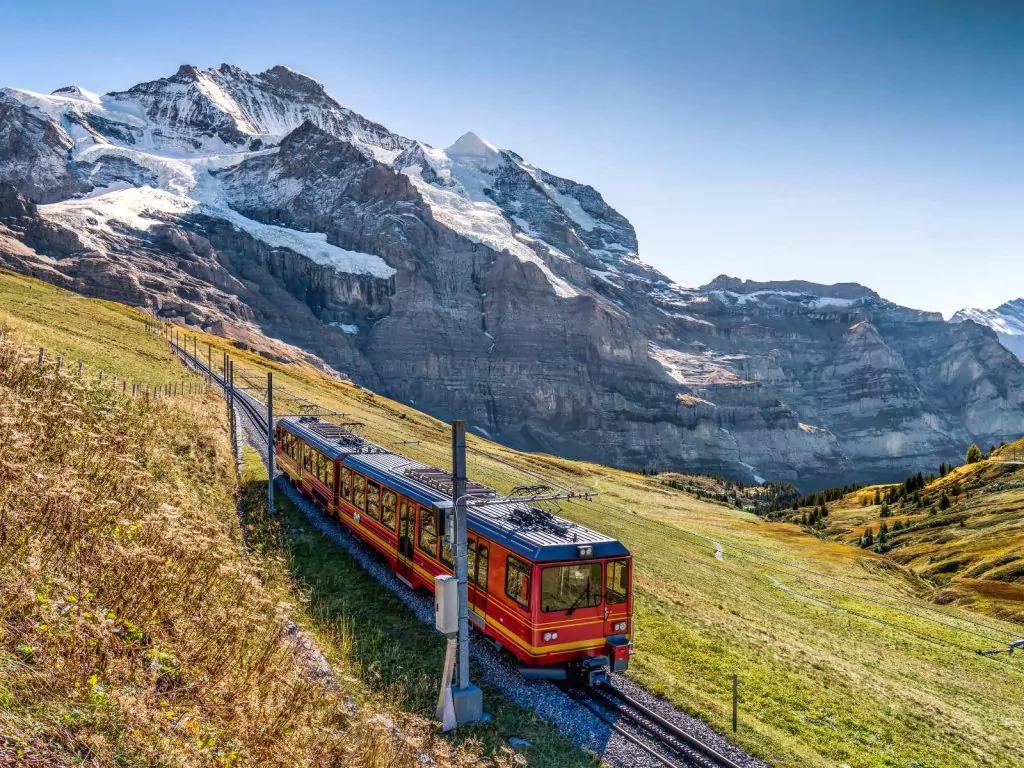
How to get to Jungfraujoch
You could either go to Jungfraujoch with a group tour, or choose to go independently with a combination of trains and gondolas.
The fastest way takes about 1h 30m, start by taking the train to Grindelwald, then switch to the fancy Eiger Express gondola for a 15 minute journey to the Eiger Glacier Station.
From here you’ll change to the Jungfrau Railway which takes you through mountain tunnels to reach the Top of Europe train station. You can book tickets online here if you have a Swiss Travel Pass or Eurail Pass, or book them online here if you’re buying tickets without a rail pass.
For the old, traditional experience of reaching Jungfraujoch, you can take the Wengenalp Railway from Lauterbrunnen to Kleine Scheidegg Station, then change to the Jungfrau Railway from there. This takes about 90 minutes from Lauterbrunnen, plus another 20 minutes to get there from Interlaken, so 1h 50m total.
TRAVEL TIP: Sit on the right side of the Jungfrau train for the best views!
While the journey to Jungfrau might sound a bit confusing, there’s very clear signage and staff who can help you get to where you need to be, as well as plenty of other tourists who will be going to the same place as you. But if you’d prefer to relax during the journey and have all the logistics sorted by someone else, there is a top-rated day tour you can take.
Visiting Jungfrau on a tour
This guided day trip to Jungfrau from Interlaken (save 10% with promocode FINDINGALEXXKLOOK) gives you the best of both worlds, with your journey there using the Eiger Express gondola and your journey back using the Wengenalp Railway to Lauterbrunnen and then back to Interlaken, without any stress on your side.
With this day tour you can’t get any discounts for travel pass though, so if you have a Swiss Travel Pass or Eurail Pass you’ll need to just book the tickets yourself to make use of the discount.
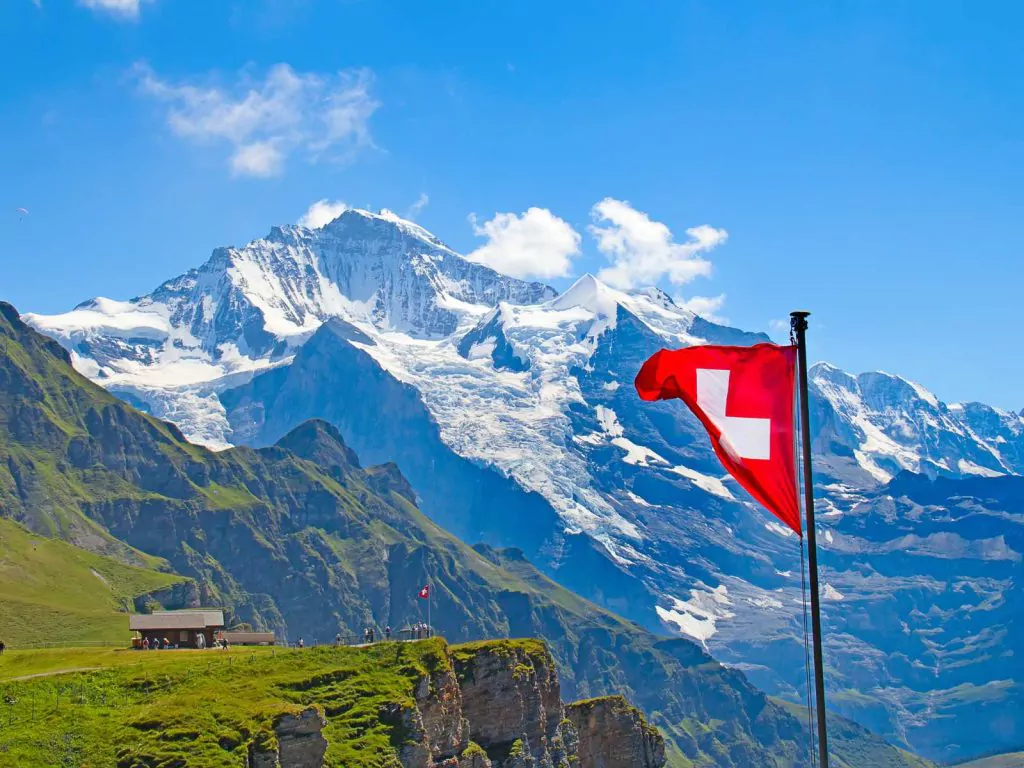
Day four: Interlaken to Zermatt
How to get from Interlaken to Zermatt
An easy train journey with two changes, taking around 2h 15m. The first train is a short 22m train from Interlaken to Spiez, then change to get on the Spiez-Visp train (26m), then a final change to catch the Visp-Zermatt train (1h 6m).
Switzerland train stations are very easy to change at, lots of staff to help, lots of tourists doing the exact same change, and these particular trains run constantly throughout the day so in the unlikely chance that you miss your connection, there will be another train coming in half an hour or less.
About Zermatt
Best known as one of Switzerland’s most iconic winter resorts, Zermatt is actually worth a visit at any time of the year, with incredible hiking opportunities through summer, vibrant colours in autumn and wildflowers blooming on the alpine meadows throughout spring.

Things to do in Zermatt
- Ski or snowboard in winter
- Get amongst the pumping apres-ski scene at the end of your day on the slopes
- Explore the charming car-free village on foot
- Enjoy a fondue dinner, the hotel I stayed at (Hotel ZERMAMA) had in-room fondue seats for you to DIY a cheesy dinner from the comfort of their room!
- Take the Gornergratbahn mountain train (promocode findingalexxklook gets you 10% off) to the top of Gornergrat for an incredible view of the Matterhorn. Sit on the right-hand side of the train for the best views.
- Walk from the top of Gornergrat to Riffelsee Lake to see the reflection of the Matterhorn in the water
- Eat a Toblerone in front of the Matterhorn, which you’ll see on the Toblerone packet
- See the peaks and valleys from a unique viewpoint with a paragliding flight
- Take a scenic cable car ride across a glacier with the Matterhorn Glacier Paradise, it’s Europe’s highest cable car station at 3883m above sea level
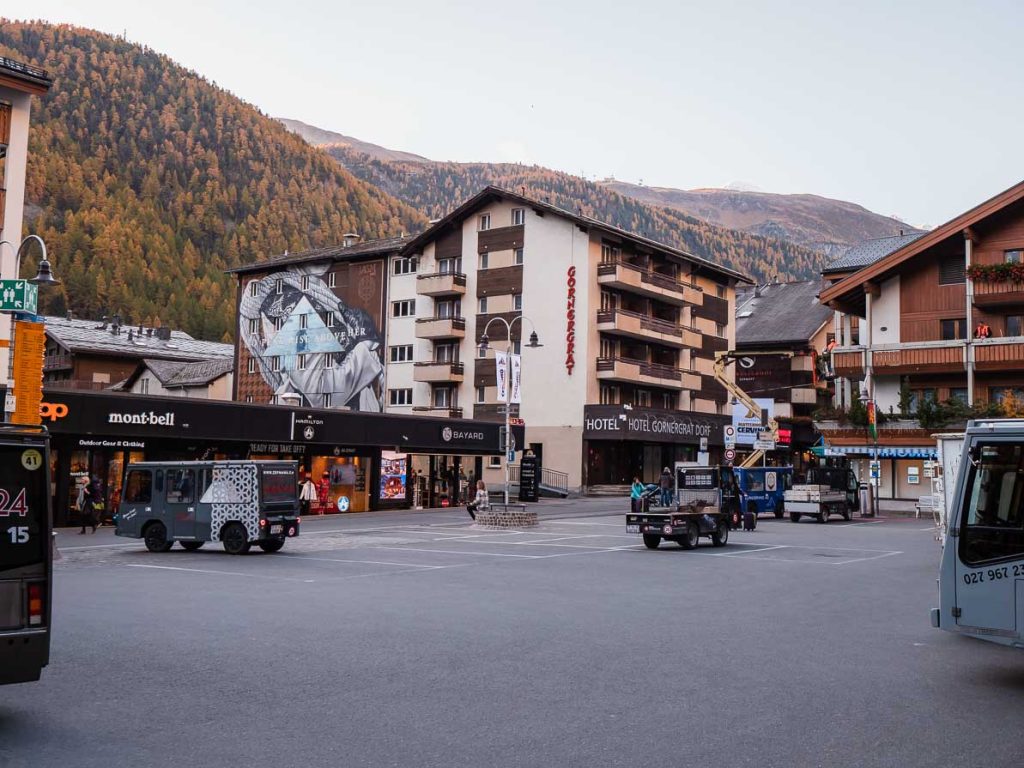
Where to stay in Zermatt
Budget | Zermatt Youth Hostel is the top-rated budget option, or ALPINA Budget Rooms, Hotel Alphubel and Le Petit Charme-Inn are also rated over 8/10 on booking.com
Mid-range | Chesa Valese, SchlossHotel Zermatt, Unique Hotel Post and Schallers Tannenhof are all well-rated with rooms for an average budget
Luxury | Where I stayed, Hotel ZERMAMA, actually offered incredible value for money and would probably fit nicely in the mid-range budget, but it was SO dreamy and luxurious that I’m putting it under luxury instead because that’s what you can expect here. The rooms are divine, with options ranging from cosy single rooms (yay for solo travellers!) through to spacious suites with bathtubs and balconies. There are lots of amazing little details, like in-room yoga mats and resistance bands with workouts on the TV, faux fur coats for chilly evenings and the aforementioned fondue set, and the staff, food options, location are all brilliant. I adore this place, I can’t wait to return!
Self-contained | Studio MIA, Alpenblick Superior and Piccolo Fiamma all have options with a kitchen/kitchenette
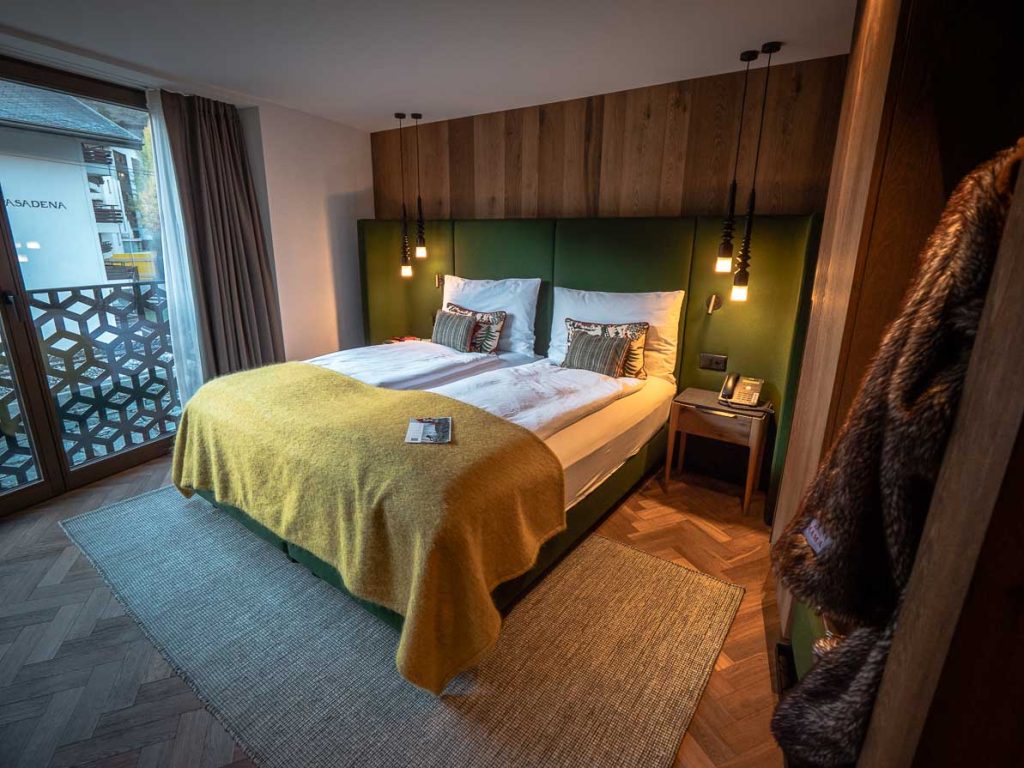
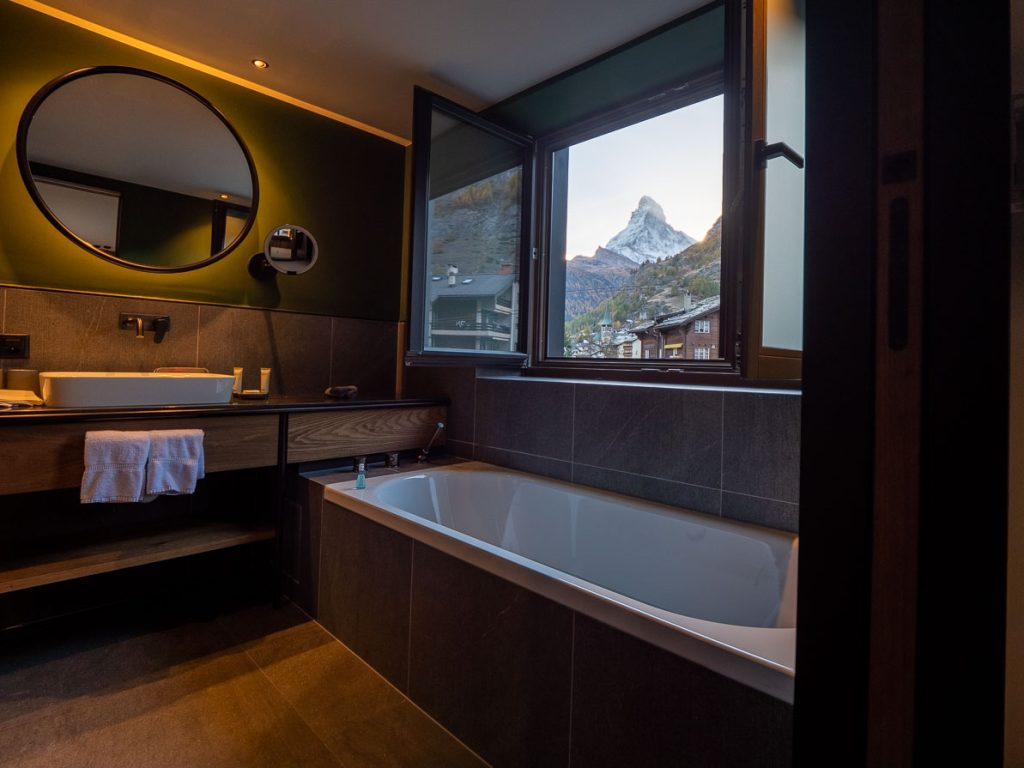
Day five: Zermatt to St Moritz
How to get from Zermatt to St Moritz
For your final day of this 5-day Switzerland itinerary, the actual journey is the experience. You’ll catch the renowned Glacier Express panorama train from Zermatt to St Moritz, one of Switzerland’s famous tourist trains and hands down one of the most scenic train journeys in the world.
About the Glacier Express
This eight-hour train slowly meanders through valleys, around mountains and over alpine passes, offering its passengers some of the most stunning scenery ever witnessed through a train window. And the windows are BIG too, curving at the top to give you uninterrupted views of Switzerland’s magical landscapes.
The Glacier Express is a popular route, for obvious reasons, and you will need to reserve seats in advance. Tickets are pricey but you can save A LOT by using a Swiss Travel Pass or Eurail Pass, that way you’ll only need to pay the seat reservation.
For more details on this incredible train journey, read my detailed Glacier Express travel guide.
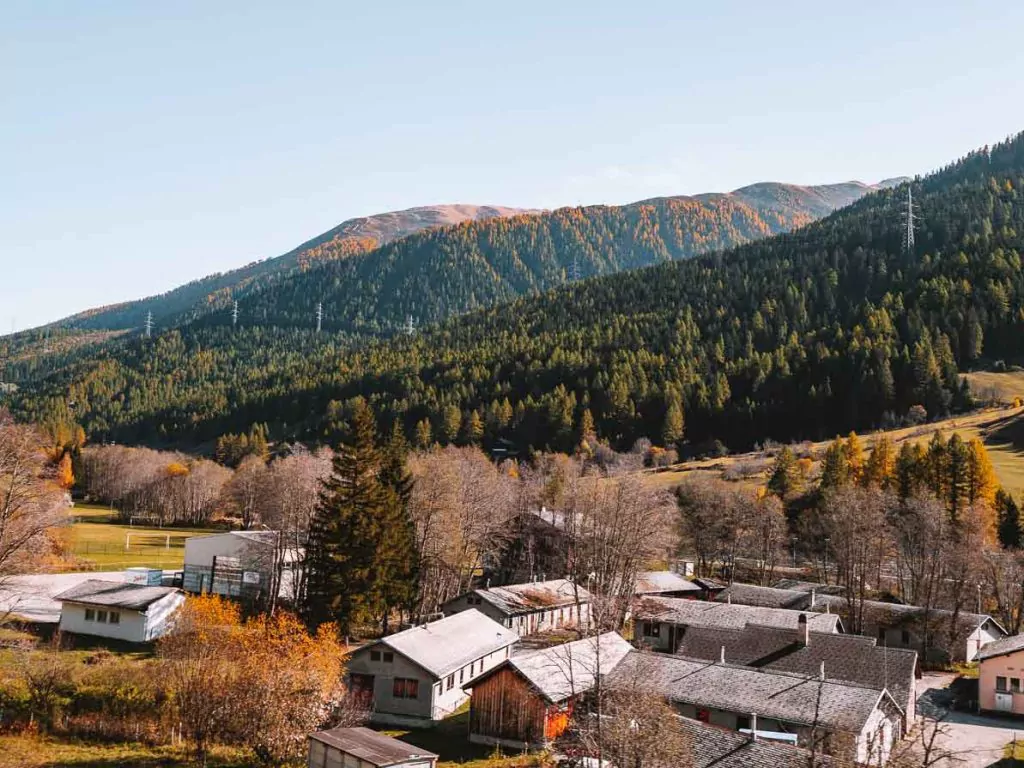
About St Moritz
The birthplace of alpine tourism since the mid-1800s, St Moritz boasts 5* hotels, fancy ski resorts and gourmet restaurants, and it’s the ideal place to enjoy a bit of luxury at the end of your five days in Switzerland. And if you’re travelling on a budget then don’t stress, spend your night at a cheap and cheerful chalet, grab a sandwich from the supermarket and enjoy it lakeside with incredible views that won’t cost you a cent.
Things to do in St Moritz
- Do the loop walk around the lake, it’s 4.4km in total with breathtaking views throughout
- Head up to Corviglia (2486m) via funicular where you can hike in summer or ski in winter, or go even further to Piz Nair via cable car (3057m)
- Get an adrenaline rush with a bobsled run down the oldest bob sled run in the world
- Treat yourself to a spa treatment at one of the luxury wellness resorts, like Badrutt’s Palace Hotel, the Kulm Hotel or the Kempinski Grand Hotel
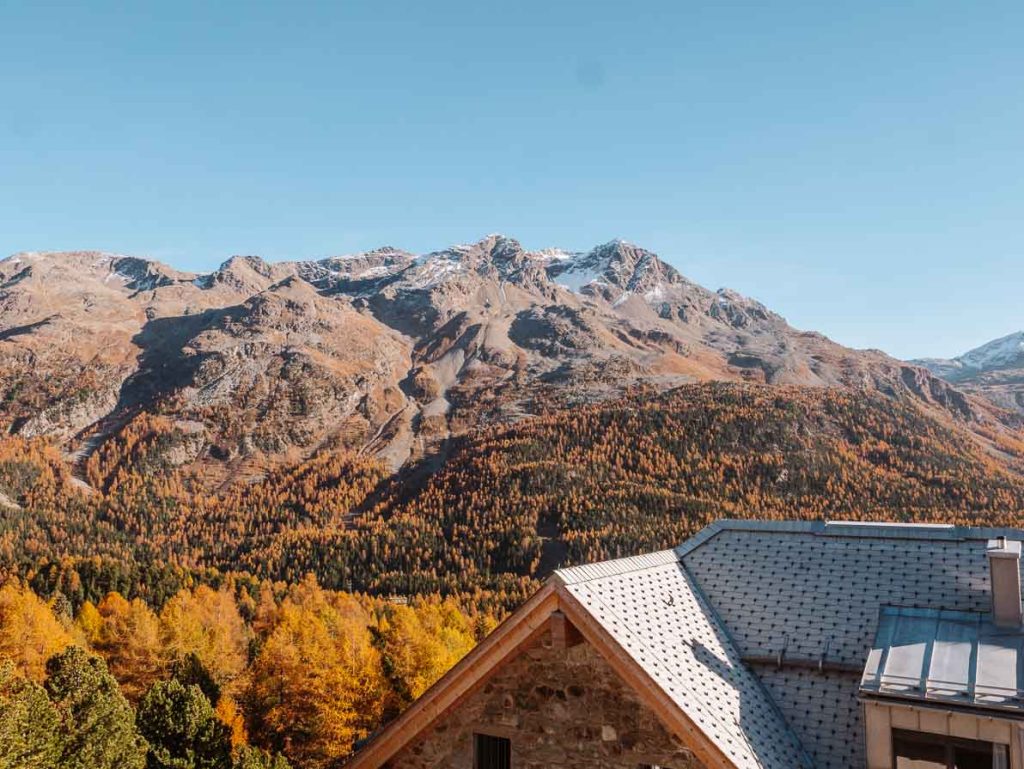
Where to stay in St Moritz
Unique | I spent two nights at one of the most unique accommodation spots in the world, a historic observatory with mountain views, a turning mechanism and a cog-wheel window for stargazing. The observatory is located at Randolin’s Berghotel and also gives you access to the hotel’s beautiful spa and wellness area. One for the bucket list for sure, a true once-in-a-lifetime experience!
Budget | St Moritz Youth Hostel or Hostel by Randolin’s are the top-rated budget options for dorm rooms or cheap private rooms
Mid-range | Randolin’s Berghotel also has mid-budget hotel rooms that offer a comfortable stay, great facilities and incredible views for an affordable price, or you could also look at Hotel Piz, Chesa Languard or Boutique Hotel Cervus
Luxury | Suvretta House is an iconic St Moritz luxury hotel, Kulm Hotel has incredible reviews, and Carlton Hotel is one of the Leading Hotels of the World
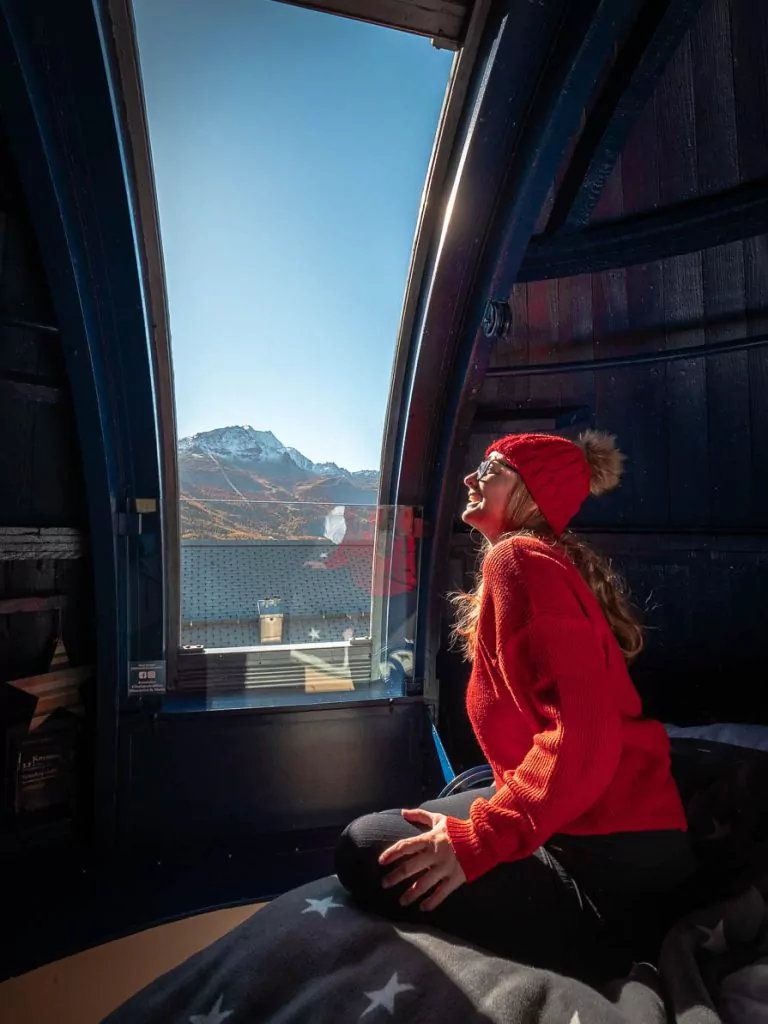
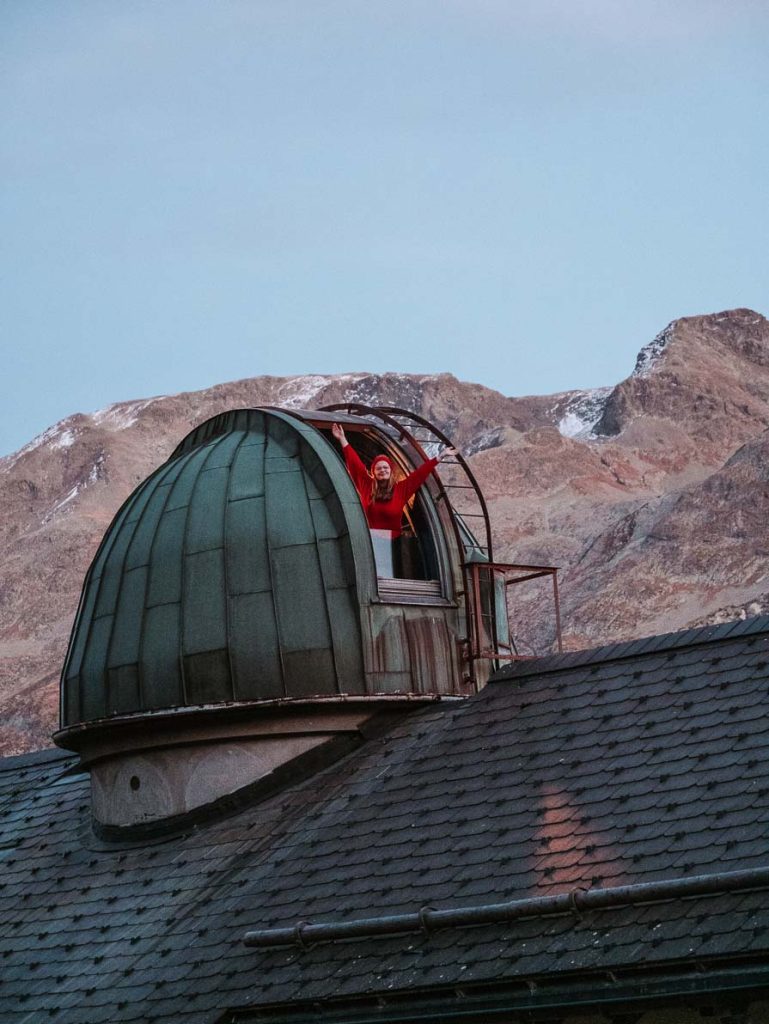
After St Moritz
At the end of your Switzerland 5 day itinerary, you could either catch the train back to Zurich to fly out (3h 10m-3h 40m, one change in Chur or Landquart) or if you’re continuing your Europe trip, I’d recommend catching another panoramic train, the Bernina Express, through to Tirano in Northern Italy.
From Tirano you can either stay a while to enjoy the sleepy Italian mountain village or take a same-day train onto Milan, where you can then fly or train to any number of cities.
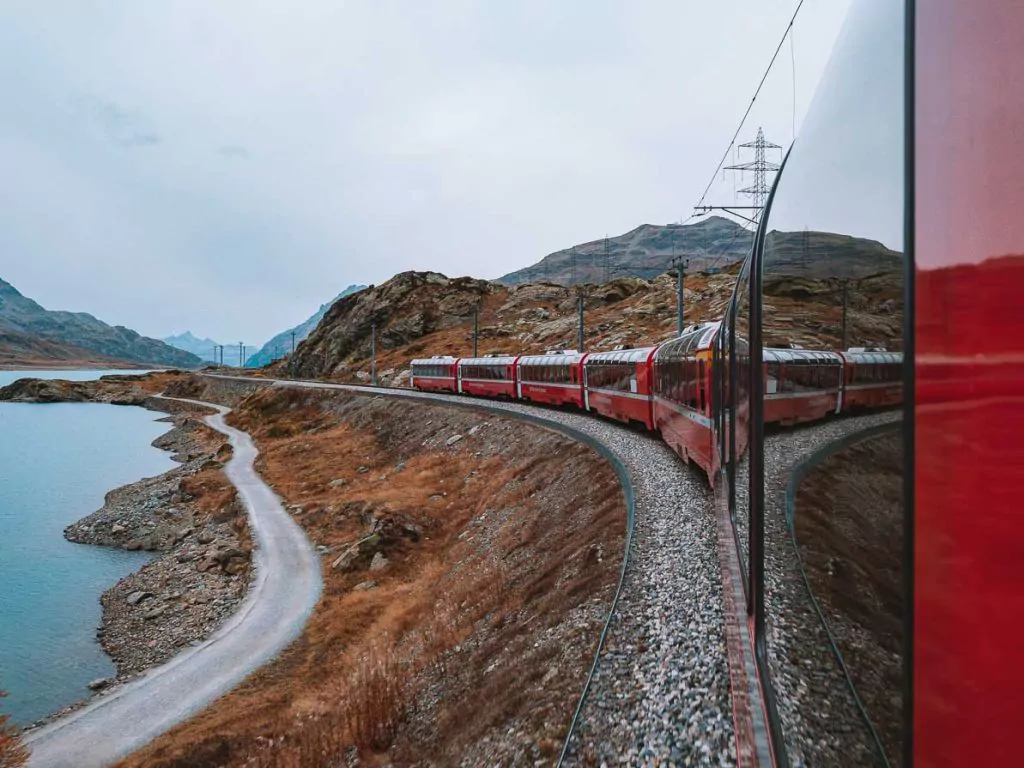
5 day Switzerland itinerary FAQS
Is 5 days enough for Switzerland?
Switzerland’s small size and super efficient public transport network means you can get around easily and quickly, so with just five days to explore you can still pack a lot in!
Like any country you’ll see and do more if you have more time, but you’ll be able to enjoy a few different cities and some epic mountain adventures with even a short trip.
What about Lucerne?
Lucerne is absolutely beautiful and offers great access to a bunch of mountains, but I *personally* preferr what the Jungfrau region has to offer (that includes Interlaken, Jungfraujoch, Grindelwald and Lauterbrunnen).
If you are really into the traditional Swiss old town vibes then Lucerne might be more your jam, or if the mountains of Stanserhorn, Rigi, Pilatus or Titlis are on your bucket list then you could swap day two to be in Lucerne instead and just do one night in Interlaken (or none!).
What about Basel?
Basel is often left off Switzerland itineraries because it’s a little out of the way of the main tourist routes, but that doesn’t mean it’s not worth a trip.
If you’re coming to Switzerland from France (or vice versa) then it’s a really easy stopover for a day trip or overnight stay, and it’s less than an hour from Zurich by train, 1.5h-ish from Lucerne and 2h from Interlaken.
Basel travel tip: Fellow digital nomads should check out Silo Hostel, my go-to accommodation in Basel. It’s located in Erlenmatt, a sustainable neighbourhood that’s recognised as a ‘2000 Watt Society’, which means that within the neighbourhood, the average energy consumption per person per year is less than 2000 watts (vs. 4700 watts for the average Swiss citizen). How cool is that! The hostel has been set up in an 1912 warehouse, and it’s got stylish pod dorm rooms or spacious private rooms, as well as a living room with coffee and snacks, meeting areas and an outdoor space too.
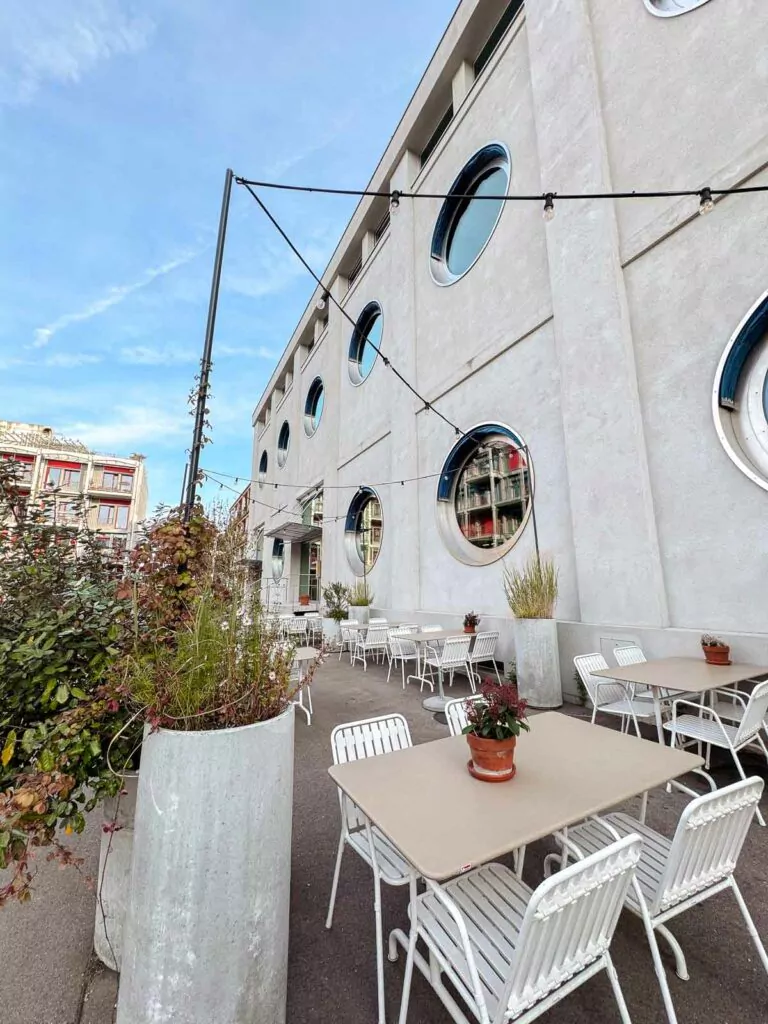
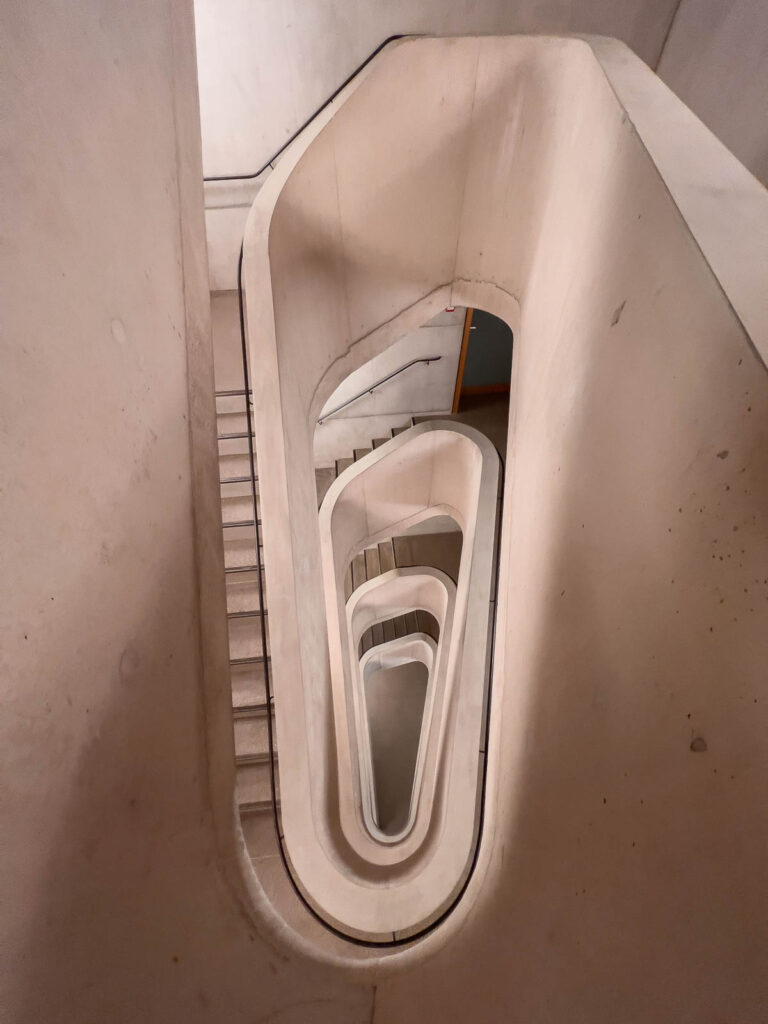
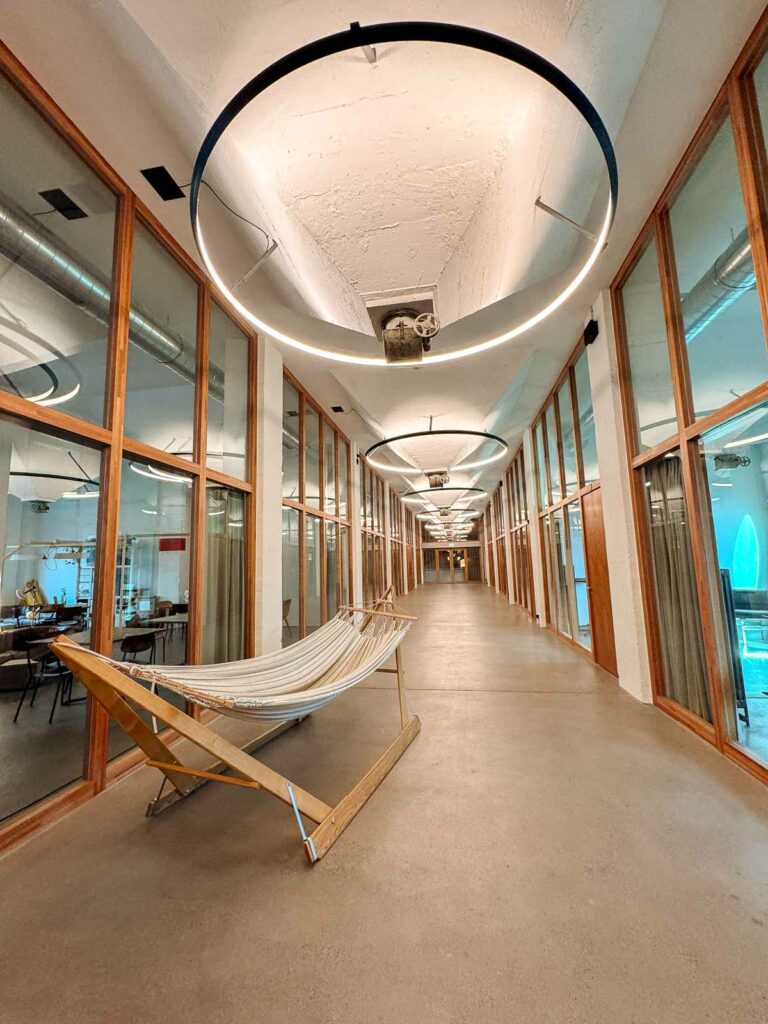
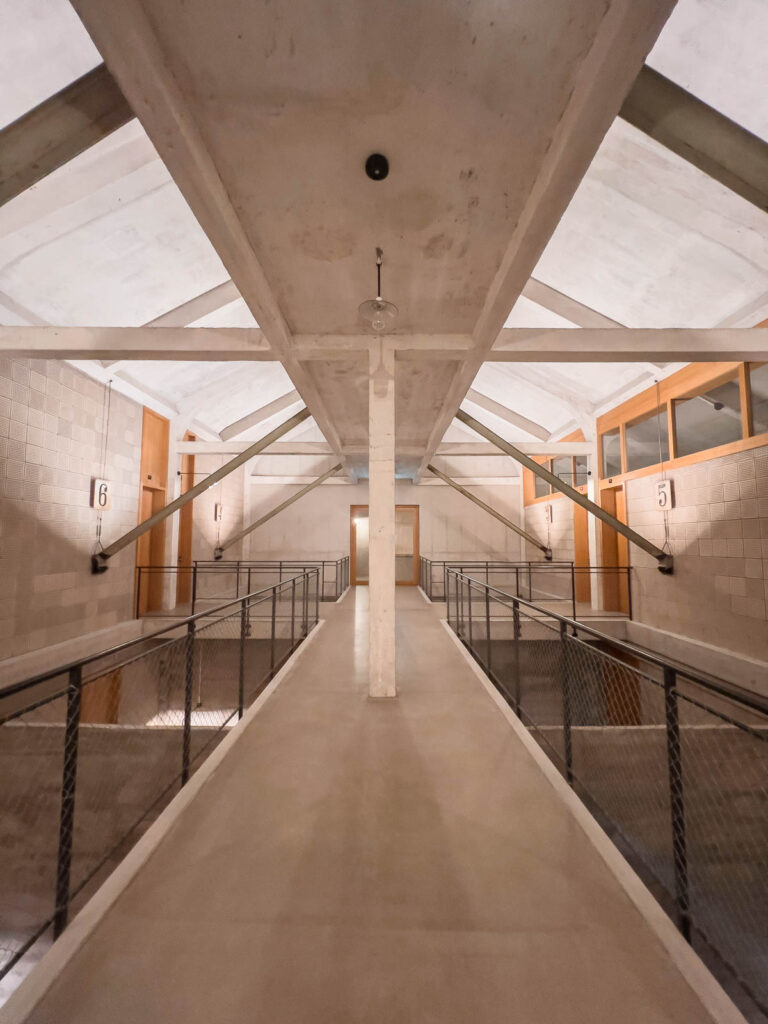
Which travel pass should I get for Switzerland?
If you followed this exact itinerary then the Swiss Half Fare Card comes out as the cheapest option, but if you’re staying in Switzerland for longer then it would really depend on the exact routes you’re taking.
Lucky for you, I have detailed guides for various travel passes to help you figure out the best pass for your trip, and each guide includes 3/4 example itineraries with full pricing breakdown. Yup, I’m a travel nerd.
- Swiss Travel Pass breakdown
- Swiss Half Fare Card breakdown
- Swiss Travel Pass vs Half Fare Card comparison
- Jungfrau Travel Pass breakdown
- Tell Pass breakdown
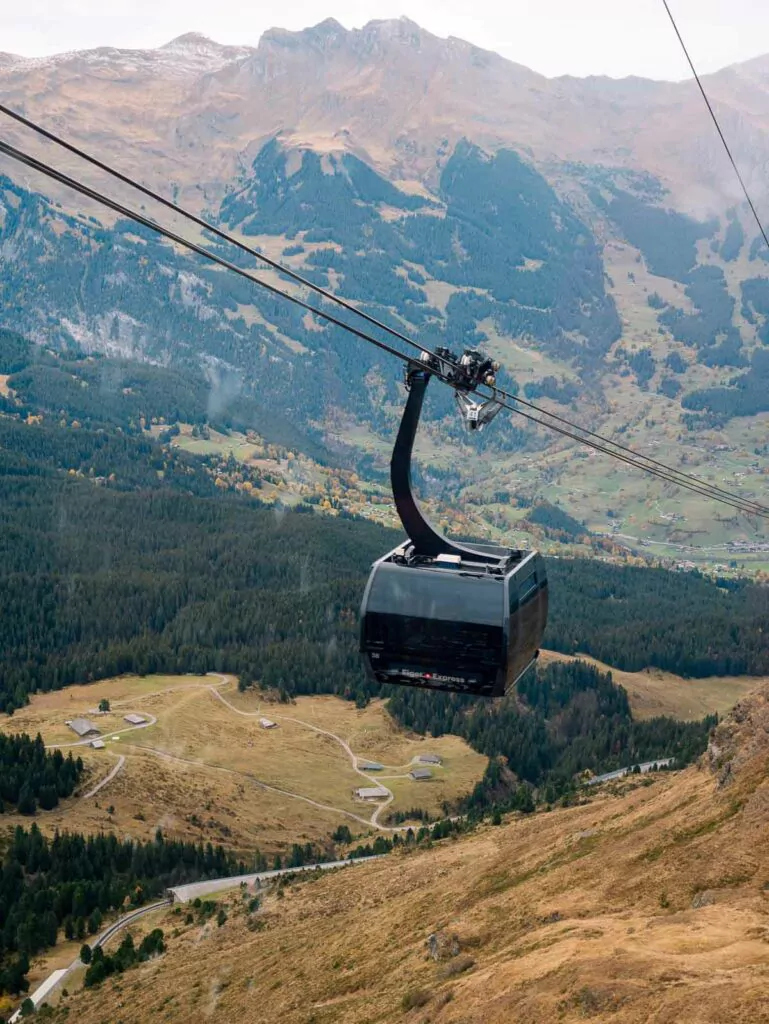
If you have less than five days in Switzerland…
If you’ve only got 3-4 days in Switzerland, I’d recommend sticking to one region to reduce your travel time, and the regional travel passes can often be really good value for those shorter, condensed trips focused on one area.
You could spend 3-4 days in Lucerne:
- Get the Tell Pass to cover your transport (it only takes two mountain excursions and a lake cruise for it to be worth it)
- Explore Lucerne Old Town, visit the Swiss Transport Museum and indulge in local cuisine
- Go for a lake cruise
- Visit a couple of the epic mountains nearby, there’s Rigi, Pilatus, Titlis or Stanserhorn
Or you could head to the Jungfrau region instead:
- Stay in Interlaken, Grindelwald or Lauterbrunnen depending on the vibe you’re looking for
- Get the Jungfrau Travel Pass to cover your transport (probably worth it if you’re doing Jungfraujoch and one other mountain trip like Harder Kulm)
- Get out active with a paraglide, caving trip, kayaking session or canyoning
- Cruise on Lake Thun or Brienz
- Visit the Top of Europe, Jungfraujoch
- Head to Grindelwald-First for adventures like ziplining, mountain carting and a Cliff Walk
- Explore Lauterbrunnen, see the sunset from Harder Kulm or explore charming alpine villages like Mürren
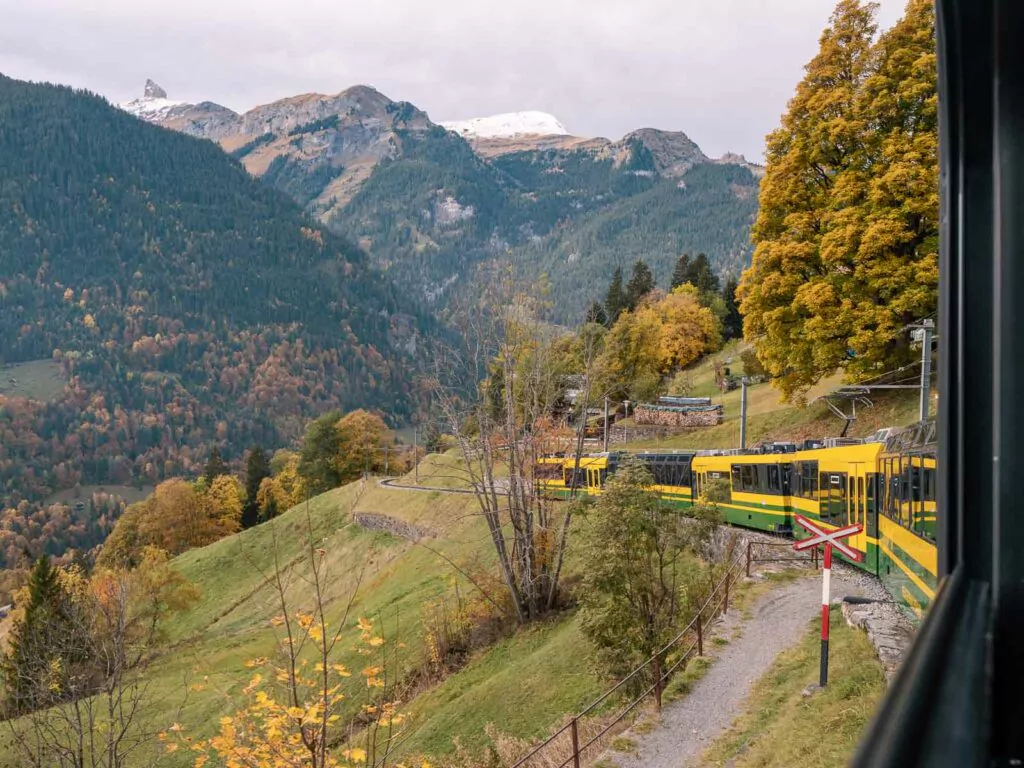
If you have more than five days in Switzerland…
You’re in luck, I have a detailed ten day Switzerland itinerary for you to plan a longer trip.
Some easy add ons to this 5 day itinerary would be:
- Add in a couple of days in Lucerne for mountain adventures
- From St Moritz catch the Bernina Express to Tirano, the connecting bus to Lugano, then the Gotthard Panorama Express from Lugano to Lucerne and back to Zurich
- Stop off in Montreux for a lakeside resort kinda vibe
- Add the magnificent library of St Gallen as a day trip from Zurich
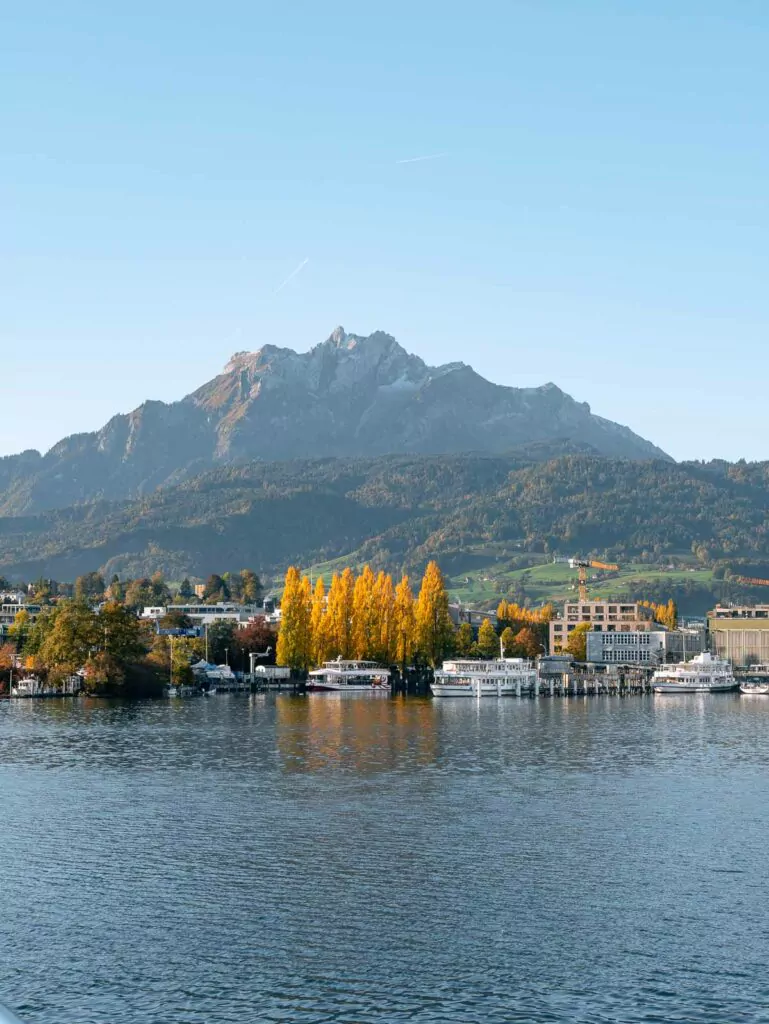
And there you have it, the ultimate five day Switzerland itinerary, complete with epic train journeys, alpine adventures, fondue-induced food comas and more than enough mountain time to fill your camera roll.
I hope this itinerary has helped you map out your short Switzerland trip and given you loads of helpful tips to help you make the most of your time (and your money) in one of Europe’s most beautiful countries. Whether you’re most looking forward to hiking scenic trails, marvelling at mountain peaks, eating your bodyweight in cheese, or gliding through the sky (with a parachute, obviously), you’re going to have the BEST time.
If you’ve got any questions my 5 days in Switzerland itinerary then drop a comment below and I’ll get back to you as soon as I can. If you’d like help with a bespoke itinerary to suit your travel style and budget, then feel free to email me at [email protected] for more info on the travel consultations I offer.
And finally, if this guide helped you out, please share it with a friend!
MORE SWITZERLAND TRAVEL INSPIRATION:
- How to spend 10 days in Switzerland
- 33 Instagrammable places in Switzerland
- Rigi vs Pilatus vs Titlis vs Stanserhorn: Which one to visit?
- The cheapest place to ski in Switzerland: Liddes Ski Hostel
- 10 reasons to try co-living in Switzerland
- The ultimate Northern Italy & Switzerland itinerary
MORE SWITZERLAND TRAIN GUIDES:
- Swiss Travel Pass vs Half Fare Card: Which one is best?
- The ultimate Swiss Travel Pass guide
- The ultimate Swiss Half Fare Card guide
- Is the Glacier Express worth it?
- Is the Bernina Express worth it?
- Bernina Express vs Glacier Express: Which one should you choose?
- Is the Jungfrau Travel Pass worth it?
- Is the Tell Pass worth it?
MORE SHORT & SWEET EUROPE ITINERARIES:
MORE EUROPE TRAVEL INSPIRATION:
- The perfect two month Europe itinerary
- The ultimate three month Europe itinerary (super comprehensive)
- A Europe Christmas market itinerary by train
- The most beautiful train rides in Europe
- 27 Europe holiday ideas to inspire you
- How to use a Eurail Pass
- Is a Eurail Pass worth it?
- The ultimate Italy bucket list
MY GO-TO TRAVEL PLANNING RESOURCES
Flights ✈️ I use Skyscanner to find the best flights for my trip and then I’ll always book direct with the airline to protect myself from having to deal with dodgy third parties if anything goes wrong.
Trains 🚂 If I’m travelling through Europe, I try to travel by train wherever possible! For an extended trip (2+ weeks) I’ll calculate if a Eurail Pass is worth it, or I’ll book point-to-point tickets through RailEurope or the local train operator.
Accommodation 🛎️ I book almost all of my accommodation through booking.com, they have a user-friendly website + app and many of their options are free cancellation, easily cancelled with a simple click of a button.
Activities 🗽I use GetYourGuide, Klook and Viator to look for activities in the places I visit, or I just Google ‘things to do in [city]’! P.S. If you book anything on Klook you can use the promocode FINDINGALEXXKLOOK to get 10% off
Travel cards 💳 I’m a Wise gal through and through, they’ve been my chosen travel card for more than five years now. You can easily top up your card from your bank account or through Apple Pay, convert your money to local currency, and spend money with minimal fees and the best exchange rates around.
Travel insurance 🩺 I use Cover-More NZ travel insurance for my own trips, I have a comprehensive policy and I’ve only had good experiences with them. Cover-More also has an Australian company, but if you’re from elsewhere then two popular insurance options for global travellers are SafetyWing (cheaper policy, lower coverage) and World Nomads (more expensive but significantly better coverage).
Luggage 💼 I travel with Samsonite Cosmolite suitcases, one 75cm check in bag and a 55cm carry on bag, and I absolutely adore them and will never travel with anything else! They are SUPER lightweight (2.8kg and 1.9kg respectively) so I have much more space for my actual stuff.
Camera gear 📸 I use a iPhone 15 Pro Max for phone photos/videos, and my camera kit includes a Lumix S9 (incredible lightweight full-frame camera, a game changer for travel creators!) with a 20-60mm lens, a Lumix G9 with an 8-18mm and 12-60mm lens, a DJI Mini 3 Pro drone and a GoPro Hero 10. I do all my writing and editing on my ASUS Zenbook 14, it’s lightweight but powerful enough for photo editing and intense blogging sessions.

Hi,
First of all, thanks for putting together this brilliant travelogue…I have never found one as detailed as this :).
I am looking for couple of clarifications.
1. While booking a reserved ticket for some of the special trains like the Glacier express, do I first buy a pass like a swiss rail pass and then book a reservation from the special train’s booking site? So when I try to book the special train reservation, it would have an option for me to enter the swiss rail pass no?
2. What is the fastest way to get back from St Moritz to Zurich? I would have to catch a flight out of Zurich by around afternoon. So how soon do I have to leave St Moritz and how much time does it take to reach Zurich?
3. Is there a website to book train tickets for the swiss railways?
Thanks,
Shubhankar-
Thank you for your kind words 🙂 I’m so glad people find it helpful.
1. You don’t need to have a rail pass before booking your seat reservations, they don’t require you to link your pass, but you’ll need to have the Swiss Rail Pass or Eurail/Interrail Pass and show the people on the train to be allowed to use your tickets. When you book the tickets it will give you the option to book seat reservation only rather than a full pass, and it might give you a dropdown to select the pass you have.
2. St Moritz to Zurich has an easy regional train journey, you can switch at Chur and it’ll take between 3h 15m and 3h 30m.
3. The big trains like Glacier Express and Bernina Express have their own websites where you book your tickets and/or seat reservations, for the local trains you can use SBB however if you have a Swiss Rail Pass or Eurail Pass then you won’t really need to use it as most (maybe all) of the regional and local trains in Switzerland don’t require any reservations.
I hope these answer your questions!
I just completed my trip based off your 5 day recommendations. I must say it was amazing, I was able to pack in a lot of sights and activities in a short amount of time, it was a wonderful trip. I’m very thankful for your itinerary and how you laid out all the travel between cites to make it much easier to plan. Thank you!
Thank you so much for your feedback Joe, I’m so glad you enjoyed your trip 🙂
Thank you so much for this information. I’ll be doing this exact five day itinerary after reading it. I’m 65 years old or young and a solo female traveler. I just don’t tell people this because they go nuts. I went to London/Paris solo and boy did people have crazy mean things to say instead of lifting me up. I have exactly 5 days in Switzerland then flying to London. I’ll be flying to Zurich from Rome. I’m still hoping a friend might meet me. But to be honest solid travel is best because I can go and do as much as I choose. I’ll get back to you with more questions as I start booking. I’m going mid June 2024.
This is so exciting, you will have an amazing time! I’m so sorry that you got negative responses to your previous solo travel, there are so many benefits to travelling by yourself and those people are probably just jealous that they don’t have the confidence to do it themselves. Happy to help if you have any specific questions 🙂
Hi, wishing you a great experience.,I’m close to your age and will follow sane itinerary in November. (Solo)
All the best
Ellie
Hope you have a fantastic trip 🙂
Thanks for these ideas. I am hoping to do something similar. Can you advise your thoughts on this?
Fly into Milan, Lake Como area, Tirano to Chur via Bernina Express, Chur to Lauterbrunnen/Wengen, then fly out of Zurich. Does this make sense logistically? Travelling early to mid June 24. Thanks
Hey Andrea, that plan looks good! From Lake Como to Tirano you can either train back to Milan and then catch another train to Tirano, or you could get a train from Lake Como to Lugano (short trip across the border) and then catch the Bernina Express bus connection from Lugano to Tirano. Have a lovely trip 🙂
This is exactly what I needed! Re: Luggage. We’ll be arriving from an Athen Cruise so my wife and I will have plenty of luggage. What do you recommend?
Also, you didn’t mention Lucerne or Mt. Rigi. Any comments on these destinations? On paper, they seem interesting to visit.
Again, thanks for pointing us on the right direction.
Hey Javier! Not sure what you are asking regarding luggage, do you mean what to do with your luggage in Switzerland? The trains have luggage storage available, I travel with a big suitcase + small carry on suitcase and have never had an issue finding somewhere to store it. I actually went to Lucerne and Mt Rigi a couple of weeks ago but haven’t updated the blog post yet, Lucerne is beautiful and has some great restaurants, definitely worth doing a lake cruise to get to Mt Rigi (cruise from Lucerne to Vitznau and then catch the mountain railway up to Rigi). The view up there is stunning, as you can imagine!
I don’t normally leave comments but I just have to for this. This was so well put together. I’ve travelled a lot but planning a trip to Switzerland has been the toughest and most confusing to approach, but this is amazing! It covered so many things, went into details without losing my interest, and was written in such a fun way. I have a trip coming up to Switzerland and now that I have a plan I am so so so excited! 🙂
Thank you so much for your kind comment 🥰 I am so glad it’s been helpful! I put a lot of time and effort into writing these super detailed blog posts so it truly means a lot to receive such positive feedback ❤️ I hope you have the best time on your trip!
Perfect itinerary! I’d planned a similar route, only in reverse from Italy. Appreciated the details and hotel options for varying budgets. Following you on IG and subscribed, thank you!
Thanks for your kind words Maki 🙂 and thanks for following along!
Hi
I appreciate you putting this detailed guide for us.
I am coming from the US and I am also planning a family trip of 6 adults by renting a van from Milan in early July.
Will there be any disadvantage of driving besides the driving having to focus on the road instead of the nature 🙂 ? Like, no access to certain part of the Alps villages, huge parking fees, high petrol cost, etc.
I feel like a car can give me a lot more access and save lot more time. Please let me know what your thoughts and suggestion for my group’s plan.
I am planning to stay one or two nights at few stops over 5 days while driving from Milan to Lake Como, St Moritz, Interlaken and back to Milan.
I haven’t actually driven in Switzerland before sorry, I always use the train so I can’t really help you there! From my knowledge parking and gas is expensive yes, but between six people it’s probably quite cost effective. There are some alpine towns/villages you can’t drive in (Zermatt is an example) so you would need to take that into account.
Hi! This is extremely detailed and helpful! Do you think Zermatt and St. Moritz are worth it in July? I noticed that a lot of what I have researched is centered around winter time and winter sports. Let me know your thoughts!
Hey Sophia! I haven’t been in July personally but based on feedback from friends who have visited, they’re both amazing in summer especially if you’re into hiking. Lots of hikes available from both, ranging from quick and easy through to epic technical treks. Just be aware that it will be busyyyyyy as it’s European school holidays so the resort towns get pretty packed.
Hello! Thanks for doing such a detail itinerary. I’m just curious, did you move out of Interlaken and stayed at Zermatt region as you mentioned you stay in the hotel there? Will be good if you can share how many nights you spent in each place please. thanks!
Hey Debi! I’ve been to Switzerland quite a few times now and I’ve visited both Interlaken and Zermatt three times. How long to spend in each place will really depend on how long you have in total and what your priorities are. There are more things to do in the Interlaken region than in Zermatt, I think two days is enough to see Zermatt’s highlights (Gornergrat, Zermatt village, Matterhorn Glacier Paradise) whereas you could easily spend 4+ days in Interlaken and be busy every day.
Thanks for the quick response! I plan to stay in Interlaken and take day trips out from there but Zermatt looks like it’ll be beautiful to stay in. I guess the risk of staying in Zermatt is that if the weather is bad, it’ll be hard to find another date to visit on a tight schedule. I’m planning for 5 nights in Switzerland in Sep so your itinerary will come in handy!
I’m actually wanting to do a 5 day trip to Switzerland to surprise my wife who turns 40 next year May.
So I’m going to need a hand to plan this, including the 8hr train!! So perhaps 6 days? As we lose one day on that train.
You could do this in five days if you don’t mind a long travel day:
Day 1: Arrive in Zurich, catch the train to Interlaken
Day 2: Full day in Interlaken for Jungfrau or other mountain adventures
Day 3: Another full day in Interlaken
Day 4: Train from Interlaken to Zermatt, Gornergratbahn or Matterhorn Glacier Paradise
Day 5: Glacier Express from Zermatt to St Moritz, then you could catch the regional trains to get back to Zurich to fly out (around 3h 45m, one change)
Hope this helps! Let me know if you have any other specific questions.
Hi Alexx, thanks for putting together this travel guide. This is really helpful!
We are planning to arrive in Zurich in September, and will be staying in Zurich for 5 days.
While in Zurich, we would like to take a tour of Zurich, take day trips to Lucerne (Mt. Pilatus), Basel (Rhine River) and the Interlaken (Harder Kulm).
What do you recommend?
Hey Georgia 🙂 GetYourGuide is my go-to for finding day tours in Europe, they have a great range with lots of genuine reviews so you can get an idea of what to expect. You can find their Zurich day tours here: https://www.getyourguide.co.uk/zurich-l55/?activeTab=172&partner_id=BWDR0X9
Hi Alexx, I will definitely check out the GetYourGuide web site for day tours. Thanks a bunch!
Hi Georgia!
Your travel blog is honestly amazing and incredibly resourceful!
I am travelling to Europe for my Honeymoon – we are planning to spend 4 nights in total in Switzerland as the ‘luxurious’ part of the trip because the scenery is absolutely stunning. We would like to end our Switzerland trip with the Berina Express from Chur to Tirano. In what region/area would you suggest we stay in that is situated a reasonable distance to Chur? We are after luxury accomodation, beautiful sights, walking/hiking, lakes and great food! Would love to hear your advice x
Hey Angelina! I’m not sure where you got Georgia from haha but I assume you mean me 🙂 thanks for your very kind feedback, I’m glad you’ve found the blog helpful.
I haven’t actually been to Chur myself, I always catch the Glacier Express the whole way through to St Moritz. Chur is apparently a very charming town and there are a few fancy hotels and some hiking trails nearby, but it’s not the most popular tourist destination in Switzerland. If you’re looking for a base for four nights with more going on then Lucerne would probably be the best option, loads of luxury hotels to choose from, easy access to plenty of mountains and hiking trails, a brilliant food scene and just over two hours from Chur by train to catch the Bernina Express. I hope this helps!
Hi Alex,
thanks so much for your feedback! I will take this on board when booking our stay in Switzerland.
I just have a few more questions if you don’t mind. Regardless of Lucerne’s location to Chur would it be your top pick for a honeymoon destination? (We are after a location with accomodation with stunning views but also close to restaurants and a station). If not, would you be happy to suggest a location we could stay in for 3 nights and the last night we could stay in Lucerne which is closest to Chur.
Also, I didn’t see your response at all before I made another post to you so sorry in advance!
Hey Angelina! In terms of my top picks for a Switzerland honeymoon regardless of proximity to Chur, I’d say my top suggestions would be Lucerne or Zermatt.
Lucerne has fantastic food, a very charming Old Town and beautiful lake views from nice hotels in Lucerne itself, plus there are some fancy resorts in the mountains nearby for even better views (but slightly less accessible). Lots of access to mountain cable cars/trains within 45 mins-1 hour, very romantic, lake cruises, etc.
Zermatt has loads of luxury hotels and most have options for Matterhorn views, the food here is pretty decent but I found the were fewer options than Lucerne (lots of hearty alpine cuisine though), from here you could do the Glacier Express to Chur (another bucket list train), spend a night in Chur and then continue on the Bernina Express the next day.
I’m not a honeymooner though and I’m also definitely not a romantic haha so this isn’t a vibe I typically look for, but those two places are where I’d choose from personally if I was planning my own honeymoon 🙂
Hi Alex,
Your travel blog is fantastic! I was after some advice if possible…
I am travelling to Europe for our Honeymoon! Switzerland will be the ‘luxurious’ aspect of the trip for 4 nights in mid September 2024. This will be the stint in our trip where we will be looking forward to winding down and relaxing – we want the ‘Honeymoon’ experience here!. We really want to enjoy the scenery Switzerland has to offer, go for some beautiful walks, maybe enjoy a spa treatment, taste local food and wine and stay away from the commercialised areas. We are both foodies and really enjoy eating out at beautiful local restaurants. Considering this will be the luxurious aspect of our trip, we would love to stay somewhere romantic with gorgeous views but still closely located to a train station so we can spend some days travelling and exploring local towns, but we want it to be mainly relaxing! We might even be up for a bit of a fun activity one day like paragliding or going on an aerial cableway – this would be a great way to experience the nature and scenery. One thing we are 100% certain on is catching the Berina Express from Chur to Tirano on the last day as our next destination will be Italy.
In which location would you recommend we stay in? Do you think we should spend 3 nights in one location and the last night closer to Chur so it’s easier to get on the Berina Express in the morning?
Would love to hear your feedback!
Responded to your other comment below Angelina 🙂
Hi Alex,
I found your blog very helpful. We’re visiting Switzerland before our cruise out of Civitavecchia. Any thoughts on the best way to get to Rome or Civitavecchia after our Glacier Express 8 hr train Ride or is there a better route ie plane?
Hey Shirley! Glad it was useful 🙂 you can catch the train from Zermatt, Chur or St Moritz to Rome (depending on which Glacier Express route/direction you take), it’ll take a few changes but it’s doable in a day. If you wanted to fly then you’d need to fly from Zurich, Milan or Geneva anyway (as none of the Glacier Express hubs have an airport) so that would require a train-plane combo.
Some options for you:
– If you’re taking the Zermatt to Chur route, catch a train to Zurich and either fly to Rome or train to Milan and then on to Rome
– If you’re taking the Zermatt to St Moritz route, continue your train journey with the Bernina Express to Tirano, then train to Milan and onwards to Rome
– If you’re taking either Chur or St Moritz to Zermatt, catch the train to Milan (a couple of train changes but easy ones) and then onwards to Rome
Hi Alex, I found your blog very helpful. We are 4 people ( family) planning Central Europe trip and switzerland was confusing. But your blog cleared lot of confusion .We land in Zurich and then do 6 -7 days in switzerland
celebrating our 25th anniversary !!
Can you help me with a few things?
1) we want to hire car and drive . ( that’s what we usually do in australia ) first timers in Europe. pros and cons ?
2)I can do switzerland in first 2 weeks or last 2 weeks of oct 24. what will be better.-weatherwise ?
3) will I need to pack ski clothes/ very warm clothes ,I usually feel very cold .
4) will there be flowers and greenery in early October ?
5) not a fan of skiing – which region will be better weather wise in oct – internet research says — obereland region weather will be good.
6) can I base myself in Interlaken/ Lauterbrunnen for all days ? and drive to all beautiful places as in your itinerary
7) I am a pure vegetarian ( no egg/meat types ) , will I survive ?
Really appreciate if you can help with these questions. Thanks in advance .
Hey Pam 🙂 happy anniversary, great place for a trip!
– I’ve never driven in Europe so I can’t really give you info on this, I choose to train because it’s cheaper and easier for me as a solo traveller. With four people driving is probably more cost-effective, but I can’t tell you anything about traffic/parking/road access to villages as I haven’t driven there myself.
– Early October is probably going to be warmer, late Oct/early Nov is generally when the snow starts in the higher alpine villages
– Pack warm clothes for sure, you will hopefully get some beautiful sunny days in early Oct but it can get very cold at night (or if the weather is bad during the day)
– October is autumn in Switzerland so you’ll get vibrant red and orange leaves which are incredible to see! There are some seasonal flowers but if you want wildflowers it’s the wrong time of the year, end of spring/early summer is best for that.
– I haven’t been to all regions in October so I can’t say which region is best sorry, but I go to the Bernese Oberland every October and I love it
– My itinerary is based on using the train, so you might want to find a road trip itinerary to suit you better. You could stay in Interlaken and then do day trips to Lauterbrunnen / Jungfraujoch as per my itinerary, but a day trip to Zermatt would be a very long day (2h 15m train or drive, and it’s car-free so you have to park your car outside of the town and then catch the train in), and a day trip to St Moritz isn’t possible as it’s four hours away by car.
– Instead you could consider spending 3-4 days in Interlaken for adventures there and nearby, then drive to the closest village to Zermatt, park your car, catch the train to Zermatt and spend 1-2 days there before returning to your car and driving back to Zurich (or wherever you need to drop your car off).
Hope this helps!
Hi Alex, you replied to my previous post a couple of days on a different blog and your quick reply and advice was much appreciated. Our travel plans seem so fluid now as there is so much to see, it’s doing my head in! We are now trying to fit as much as we can into 2 days in Switzerland (late Sept). Is it possible to do the Zermatt to Chur (or vice-versa) Glacier Express without having to spend a night in either of those 2 towns as the accommodation will be quite pricey. We will be Eurailing from Paris and are looking at either Montreux or Zurich as a starting point (or possibly Interlaken). A possibility is to only do the Brig/Chur portion, but that would mean missing out on the Zermatt/Brig section. Are we trying to do the impossible as we have a young child in tow?
thanks
Paul
Hey Paul! Yes it’s extremely difficult to decide what to do haha I have this problem constantly, especially when accomm is so expensive.
The Chur to Brig section is really beautiful but I think it would be a shame to go all that way and not do the full route to Zermatt. If your daughter can handle a long travel day, you could consider:
– Zurich to Chur early in the morning
– Glacier Express 903 departing Chur at 11.05am, arriving in Zermatt at 5.10pm
– Maybe a dinner stop in Zermatt (I believe there are lockers at the train station for luggage)
– Regional train from Zermatt to Tasch which will probably have cheaper accommodation
If that’s too intense for a six year old (understandable!) then perhaps it would be best to leave the Glacier Express for now, and instead use Lucerne or Interlaken as a base for a couple of days.
Lucerne has a fantastic museum of transport which is perfect for kids, plus you could do a mountain excursion to Rigi (beautiful train ride up) or Stanserhorn (an epic open-air cable car).
Interlaken on the other hand is great for Jungfrau (highest train station in Europe), Grindelwald-First (they have cool activities up there like a zipline but I’m not sure of the age restrictions), Lauterbrunnen (iconic mountain village) and Harder Kulm (steep funicular to an incredible viewpoint).
Sorry I’ve probably just made it even harder for you to decide haha
Thank you for your amazing travel itinerary. It is very helpful as I have been having difficulty planning a trip to Switzerland because I find it a bit confusing.
I couldn’t find information about traveling with a child who still uses a stroller. Are the transportation options in Switzerland, such as buses, trains, cable cars, etc., child-friendly for a 3-year-old, and can we bring the stroller ?
Thanks.
Hey Leona 🙂 I don’t have children so can’t tell you from my personal experience, but from what I’ve seen/noticed on my trips, Switzerland is very stroller-friendly and overall is very accessible. All public transport will be fine for sure, strollers won’t be a problem on the SBB transport network. Privately-run cable cars and mountain excursions are usually family-friendly, but it might be worth checking that specific activity before you book anything just in case.
Thank you for your response. Regarding payment methods there, is it more common to use debit/credit cards or cash? From my experience in Germany, almost 90% of places accept contactless payments, and cash payments are only in specific places. But I’m not sure how it is in Switzerland, Because I need to know whether I should carry a lot of cash or not.
Both cash and card/contactless are widely accepted, I have used cash a handful of times in Switzerland but have never had an issue paying with card at shops, restaurants, markets etc.
Hi! My husband and I will be traveling to Switzerland for only four days (I will be in Europe for work a week before that) starting November 8. From the other comments/responses, would the below itinerary work? Should we spend only one day in Interlaken? Hoping to check out Grindelwald too but would that be doable on day 2? Any recommendations for activities each day if we are mainly focused on sightseeing in November (and not much hiking as trails may be closed)?
Day 1: Arrive in Zurich, catch the train to Interlaken
Day 2: Full day in Interlaken for Jungfrau or other mountain adventures
Day 3: Another full day in Interlaken
Day 4: Train from Interlaken to Zermatt…then back to Zurich?
Day 5: AM flight from Zurich
THANK YOU!
Hey Linda! Some quick answers to your questions:
– How you spend in Interlaken really depends on what you want to do. If you want to kayak, cruise, paraglide, walk the lake etc. then you will want longer, if not then one day is fine.
– You could do Jungfrau and Grindelwald on the same day as long as you don’t mind rushing (I did this last October) however just remember that at that time of the year the sun sets around 5pm, so you don’t have that much daylight.
– All my activities are listed in this blog post as well as my 10 day itinerary: https://findingalexx.com/10-day-switzerland-itinerary/
– Interlaken to Zermatt to Zurich in one day isn’t worth it I don’t think, it’s 2h 15m from Interlaken to Zermatt, then at least 3h from Zermatt to Zurich, so you wouldn’t have much time at all in Zermatt. Skip this and leave it for next time I reckon, or cut down a day in Interlaken and do Zermatt instead.
Hope this helps!
Thanks so much for the quick response!! We want to paraglide in Interlaken so will likely skip Zermatt. We were hoping to get a glimpse of the Matterhorn somehow but may have to save that for another trip!
Yep keep it for your next trip and then you can do it properly, with a Matterhorn-view room, Gornergrat train and cable car to Matterhorn Glacier Paradise. You’ll still see plenty of incredible mountains with your current itinerary 🙂 have the best time!
Thank you!!! Based on other blogs about travel passes, it doesn’t seem like getting one for this trip would be worth it since we have a shorter trip (not staying in the same region for 3 or more full days). Do you agree?
Day 1: Arrive in Zurich, catch the train to Interlaken
Day 2: Full day in Interlaken for paragliding and Harder Kulm
Day 3: Jungfrau day trip
Day 4: Train from Interlaken to Zurich and explore Zurich for the day
Day 5: AM flight home
The Swiss Half Fare card would almost definitely be the best option for your trip! It’s only 120CHF and it’ll give you half price on the intercity trains + Jungfraujoch + Harder Kulm and any other public transport. For Jungfraujoch alone it saves 111.90CHF off full price so it will easily be worth it. You can also get 10% off the Half Fare Card (and other Switzerland activities like paragliding etc.!) if you buy it on Klook with the promocode FINDINGALEXXKLOOK 🙂
Amazing. Thank you so much – you’ve been so helpful!!
No worries at all, I hope you have a lovely trip 🙂
Thanks Alexx for your beautiful sharings.
I am planning for a senior friendly trip for my parents in May next year. Do not want to have super long train ride (8hrs) via Glacier Express and also want to let them have a different experience instead of mountains after mountains. They love to walk but i do not want too taxing for them too.
Which 2 mountains should i cover? – Jungfraujoch & Matterhorn?
Kindly advise.
Many Thanks.
Hey Sharon, it’s hard for me to say without knowing how mobile they are + how long you have in Switzerland + where you’ll be staying. If you are going to be based in Interlaken then Jungfraujoch for sure, then if you go to Zermatt you could do Matterhorn Glacier Paradise (more accessible) or Gornergrat (some lovely views from short walks from the station, but requires more stability/fitness). Other options are Rigi or Stanserhorn from Lucerne, or Schiltorn is accessible from Interlaken too.
Hi Alexx,
You and your page are amazing! Your travel tips are incredibly helpful and well-organized. My husband and I are planning a 5-day itinerary for February 2025, and we were wondering if your itinerary would be suitable for this season. We will be flying into Zurich and departing from Geneva to London. Any advice or adjustments you would recommend for traveling during that time of year would be greatly appreciated.
Thanks again for sharing such valuable insights!
Thanks so much for this very detailed itinerary. It is so overwhelming to try and plan (with so many cities/sites to see). We are coming to Switzerland as part of a 2 week trip ending in Munich for Oktoberfest. We wanted to do Zurich (or interlaken) for 4-5 days and Salzburg, Austria for 4-5. I’ve read multiple times that Zurich is fine but staying in Interlaken and doing day trips is the way to go. Is Lucerne or Lausanne worth visiting or am I just making this more confusing for myself (and I should just stick with your suggestions). We are not hikers, just like sightseeing and taking in the culture.
Also, do you know anything about Austria (Salzburg)?
Thanks for any and all suggestions
Hello! Lucerne is definitely worth visiting if you’re into culture, you could split your time between Interlaken and Lucerne for sure. I haven’t been to Lausanne, I’ve heard great things but with only 4-5 days I’d say it would be best to choose two places max.
I’ve been to Salzburg a couple of times but they were very quick trips so I don’t have a tonne of suggestions, very pretty city though and the fortress is well worth a visit.
Hi Alex, I really like your story and it’s very good. I’m planning to go to Switzerland from April 2 to 6. I’m planning to go to the city of Lucerne, Interlaken & Grindelwald and take the Glacier Express. I want to ask you
1. I plan to stay in just 1 city for a few days. Which city is strategic so it’s not far to Interlaken and take the Glacier Express?
2. Can I visit Interlaken, Grindelwald and Lauterbrunnen in 1 day?
3. Which pass is suitable for me? Is it the Swiss Travel Pass or the Swiss Half Pass?
i hope you answer my question. Thank you for the information alex
Hello! There isn’t really one good city that you could use as a base for those towns + the full eight hour Glacier Express, because the Glacier Express runs from Zermatt to St Moritz and both those places are 2.5-3 hours away from the other spots you’ve mentioned.
You could use Interlaken as a base for three nights, visit Lucerne, Grindelwald and Lauterbrunnen from there, then go to Zermatt for one night, catch the Glacier Express to Chur (75% of the way) and then train back to Zurich to fly out?
I wouldn’t recommend trying to visit Interlaken, Grindelwald and Lauterbrunnen all in one day, you would be rushing! Grindelwald and lauterbrunnen can be seen on the same day, but I think Interlaken deserves a full day so you can walk along the lakefront, visit Harder Kulm funicular, go paragliding, etc.
I can’t do a proper pass calculation without knowing exactly what mountain excursions you want to do, but your itinerary is similar to the first example in my HFC vs. STP blog post (https://findingalexx.com/swiss-travel-pass-worth-it/#is-a-swiss-travel-pass-worth-it-four-example-itineraries) and that one shows the Half Fare Card comes out as the best value choice.
Is it best to use the Eurrail pass if you are traveling by train in Switzerland and Italy? Thank you so much for your very informative blog!
It completely depends on your itinerary, in Italy all high speed trains require reservations and these can add up (5-15EUR usually) so it might end up being better value for you to buy a Swiss Travel Pass or Half Fare Card for Switzerland, and then just buy individual tickets for Italy. You can see my Swiss Travel Pass vs. HFC blog here for example Switzerland itinerary breakdowns: https://findingalexx.com/swiss-travel-pass-vs-half-fare-card/
Hola, Alex,
¡Tu blog de viajes es fantástico! Quería algún consejo, yo llego a Milán de un viaje a Budapest el 10/06. Nuestra idea es hacer Suiza, nuestro vuelo de regreso es desde Zurich el 16/06 por la tarde. Nos encantó el itinerario. Pero la consulta es,
A) desde Milán podríamos hacer alguno de los 2 trenes (glaciar express o Bernina) el mismo 10 por la tarde o arrancar el 11/6 temprano y hacer alguno de los 2 trenes?
B)cual de ellos convendría hacer, si después seguimos tu itinerario de Interlaken y alrededores por 3 días?
C) o nos conviene ir a Brig y solo hacer la región de Interlaken y Berna?
La verdad nos gustaría hacer alguno de los trenes famosos y no perderse nada, pero
D) tampoco conocemos Milán y quizás conviene quedarnos algún día allí e ir alguno lago Como y dejar los trenes para otra oportunidad.
Que te parece más conveniente?
Nos das una mano?
Mil gracias
Hi Gisele 🙂 from Milan the easiest train out of those two would definitely be the Bernina Express, it starts in Tirano which is a direct 2.5 hour train from Milan. To get to the Glacier Express start point in Zermatt it would be 5.5-6 hours from Zermatt with 3-4 train changes. From Chur you could reach Interlaken by train with one easy change, total journey of 3h 20m.
Lake Como is beautiful too and Milan is lots of fun so whatever you should choose really just depends on your priorities!
Thank you Alex! Your answer is great. Due to the number of days and preferences, we will choose to omit the panoramic trains and go directly to the cities that you propose in the first part of the itinerary.
In this case, to do the first 3 days of the itinerary, Interlaken, etc. In this case, how is it convenient for us to go from Milan? Do you calculate that Lucerne could be added in a 4 day? What train pass suits us?
Thanks
Milan to Interlaken is quite easy, about four hours direct with changes in Domodossola and Spiez I think. You could add a day in Lucerne for sure! The pass will really depend on the activities you plan on doing like which mountain excursions, you need to calculate the cost of your itinerary to be sure.
Thank you, when I get back I’ll tell you how the trip went!
Hello Alexx,
Wonderful Itinerary. Thank you very much. We have come up with the following Itinerary. Your thoughts/expert suggestions:
Date Day High level plan Overnight Stay
9/4/2025 Thursday Travel from SFO to Geneva
9/5/2025 Friday Day 1: Arrive Geneva → UN Visit → Lausanne → Bern Bern
9/6/2025 Saturday Day 2 – Bern → Zermatt (Matterhorn Day Trip) → Return to Bern Bern
9/7/2025 Sunday Day 3 – Bern → Jungfrau Region Highlights → Return to Bern Bern
9/8/2025 Monday Day 4 – Bern → Lucerne → Mt. Pilatus → Zurich Zurich
9/9/2025 Tuesday Day 5 – Zurich → Rhine Falls → Zurich Zurich
9/10/2025 Wednesday Day 6 – Zurich → Chur → Bernina Express → Tirano (Late Night Departure to Milan) Milan
We are a 65 year old couple, will purchase the Swiss Travel Pass and would appreciate your wisdom.
Hello! Sounds like an awesome trip 🙂 What suggestions are you looking for exactly? I have written all of my top Switzerland tips into my blog posts so I’m not sure what other info would be helpful to you, but if you have specific questions then let me know and I’ll see if I can help.
Hello, from California,
Our family of 4 will be traveling to Europe in early December for the Christmas markets. We have 7 nights to explore Colmar and Strausburg, France and Switzerland. We were wondering if Basel would be a good base since it’s so close to the border. We want to spend the majority of that time in Switzerland. We will then fly to Prague for 3 nights before flying home.
1. Is Basel a good place to stay for day trips?
2. What would you recommend for daytrips from Basel to see the most beauty as well as experience some fun. Two of us in our 50’s and two in their early 20’s. We are open to staying somewhere else more centrally located but definitely want to spend a couple days visiting Colmar/France.
Any thoughts for a 7 day trip itinerary?
I have been wracking by brain for days hoping I’m making the right plan.
Thank you!
Hey Robyn 🙂 I haven’t spent much time in Basel sorry so I’m not the best person to ask, but you could easily day trip to Zurich, Bern and Lucerne, even Strasbourg in France too. It would probably be worth getting at least a Half Fare Card, maybe a Swiss Travel Pass vs. buying individual tickets.